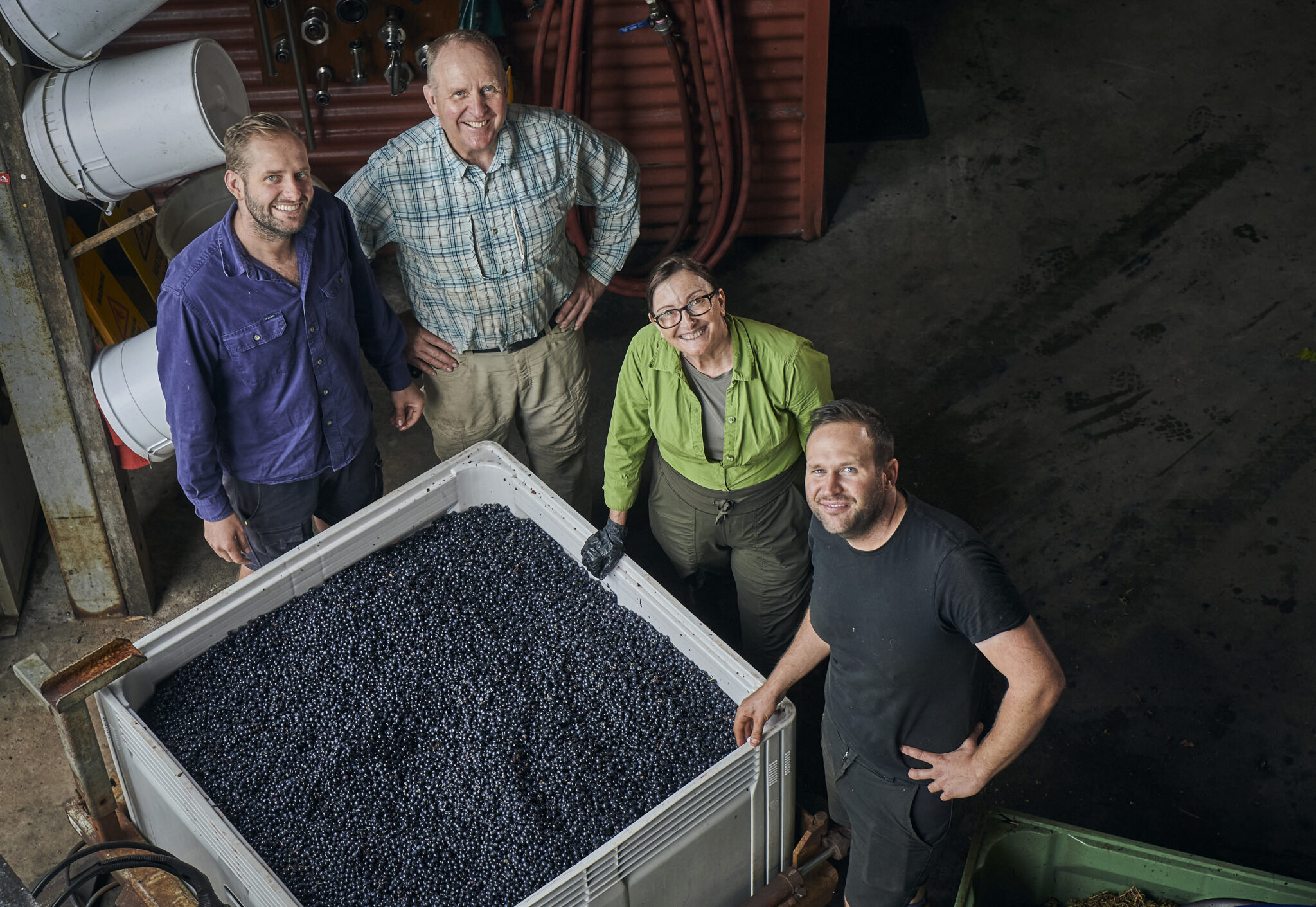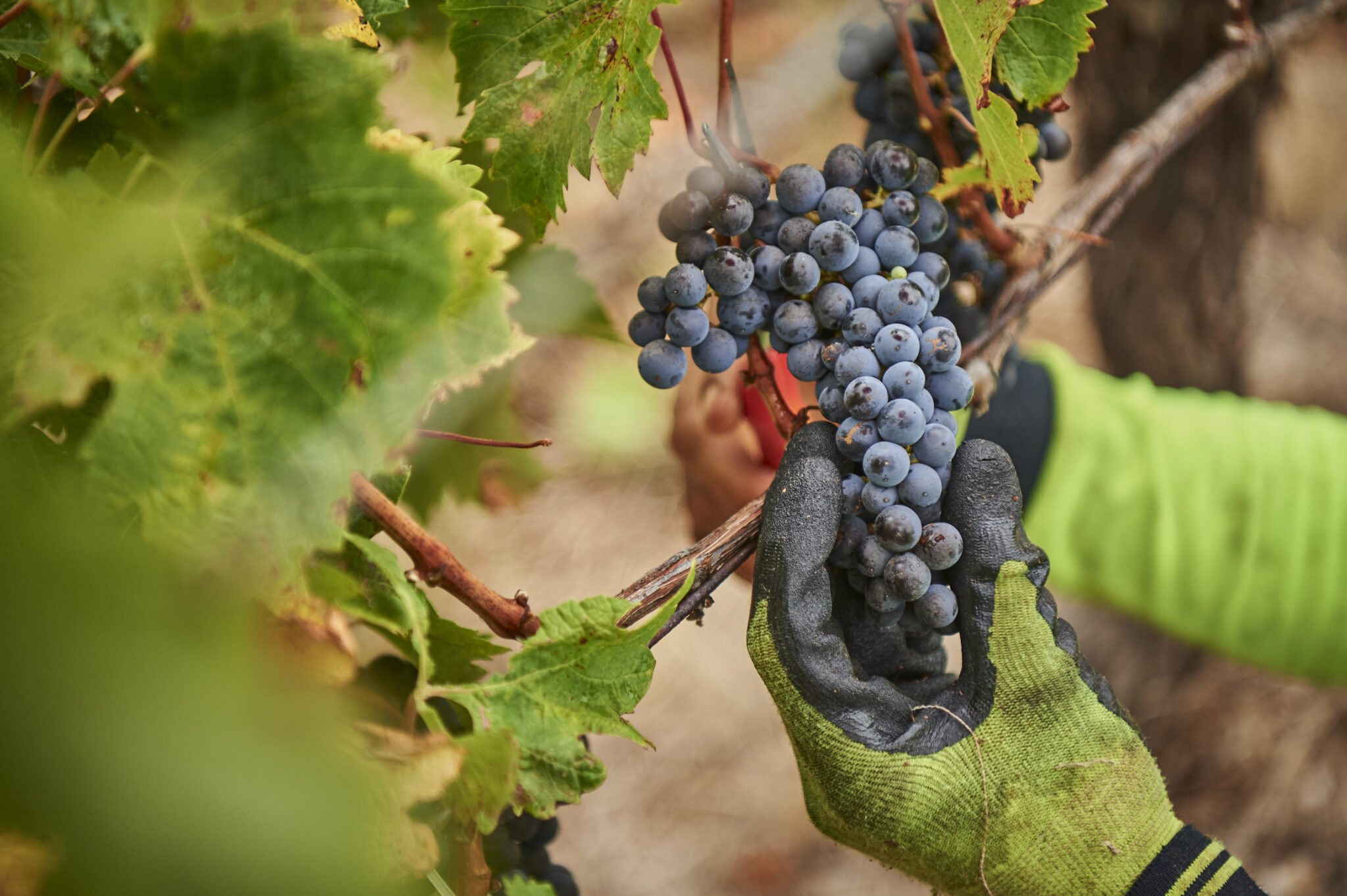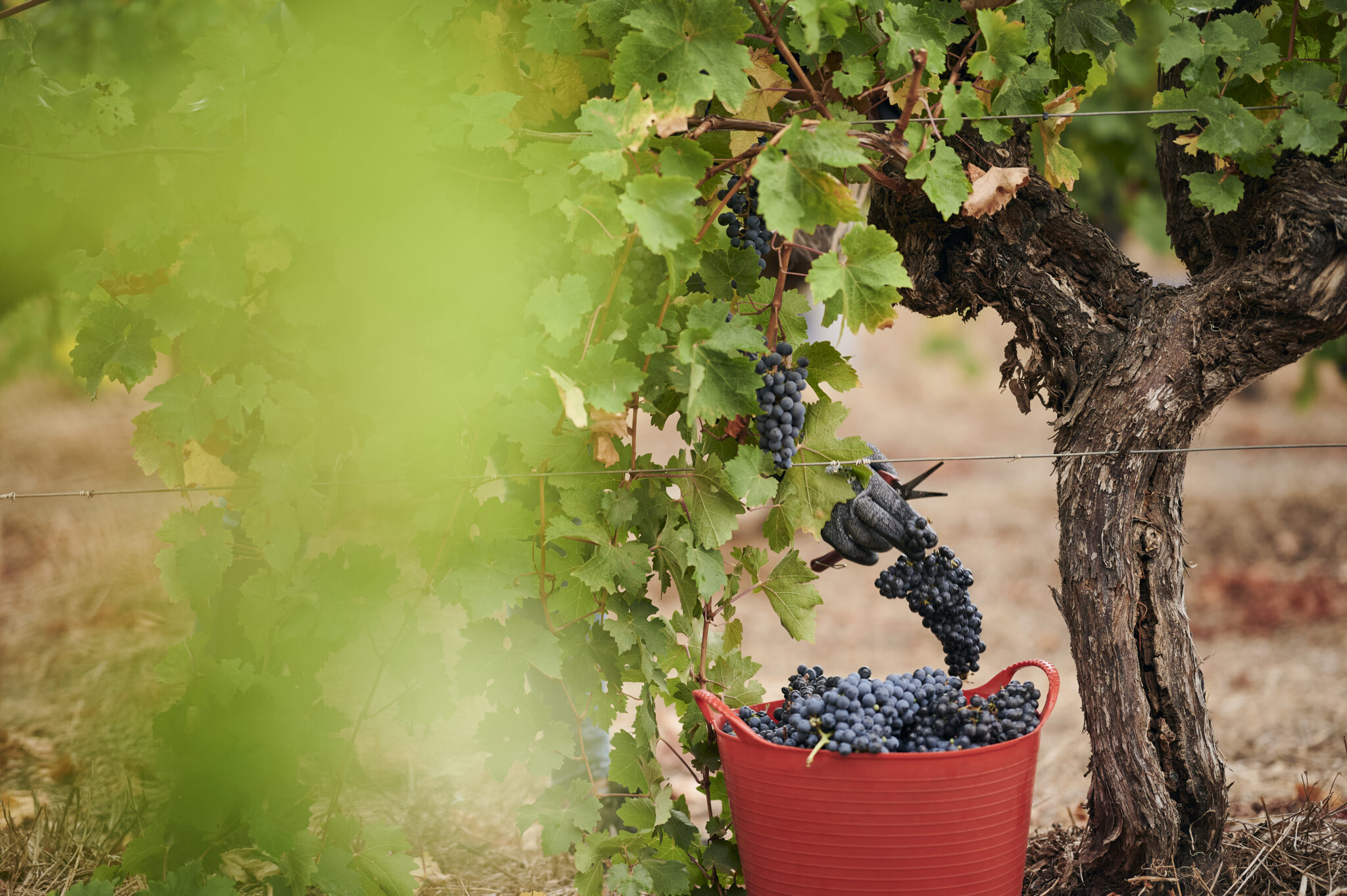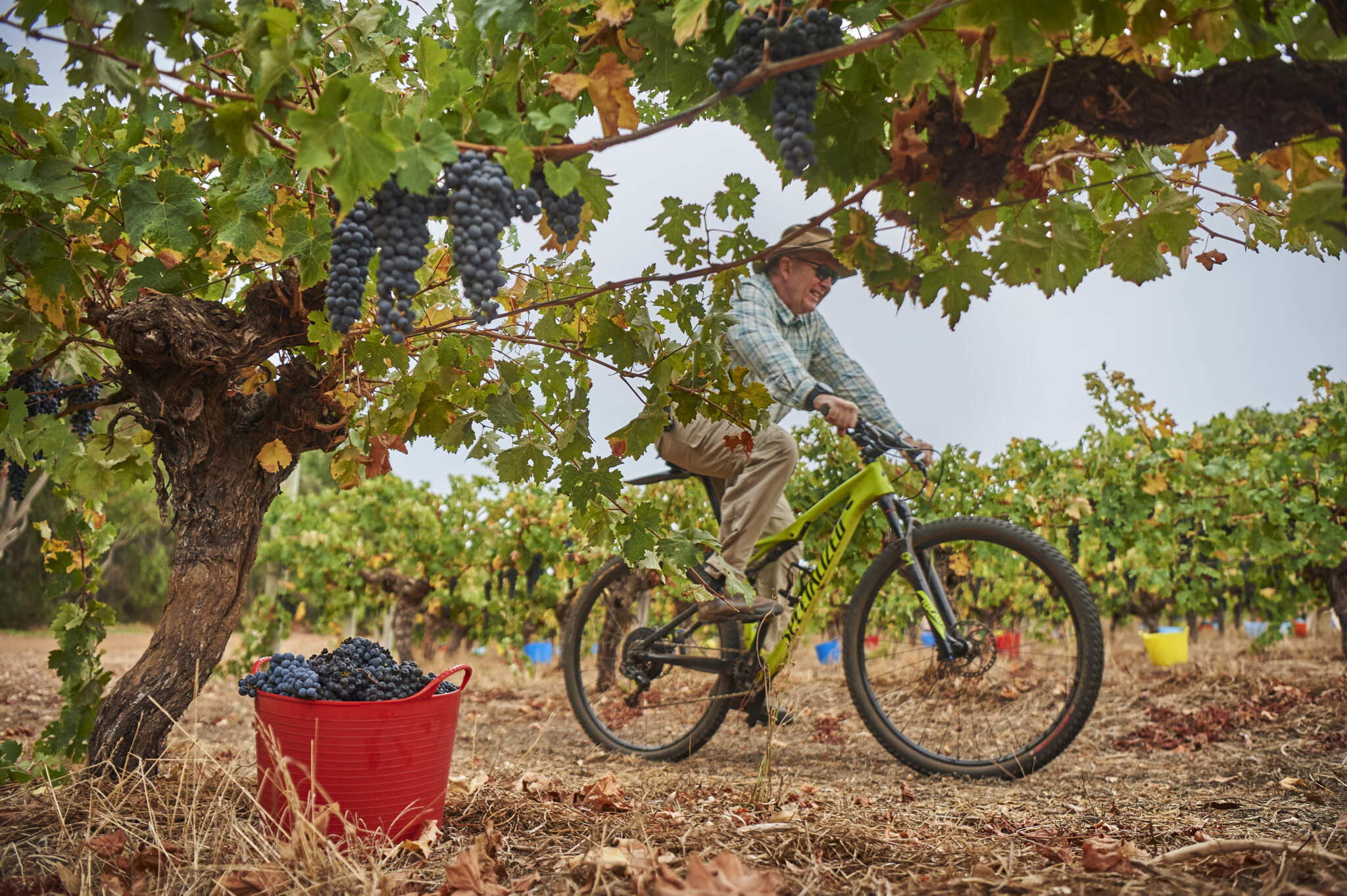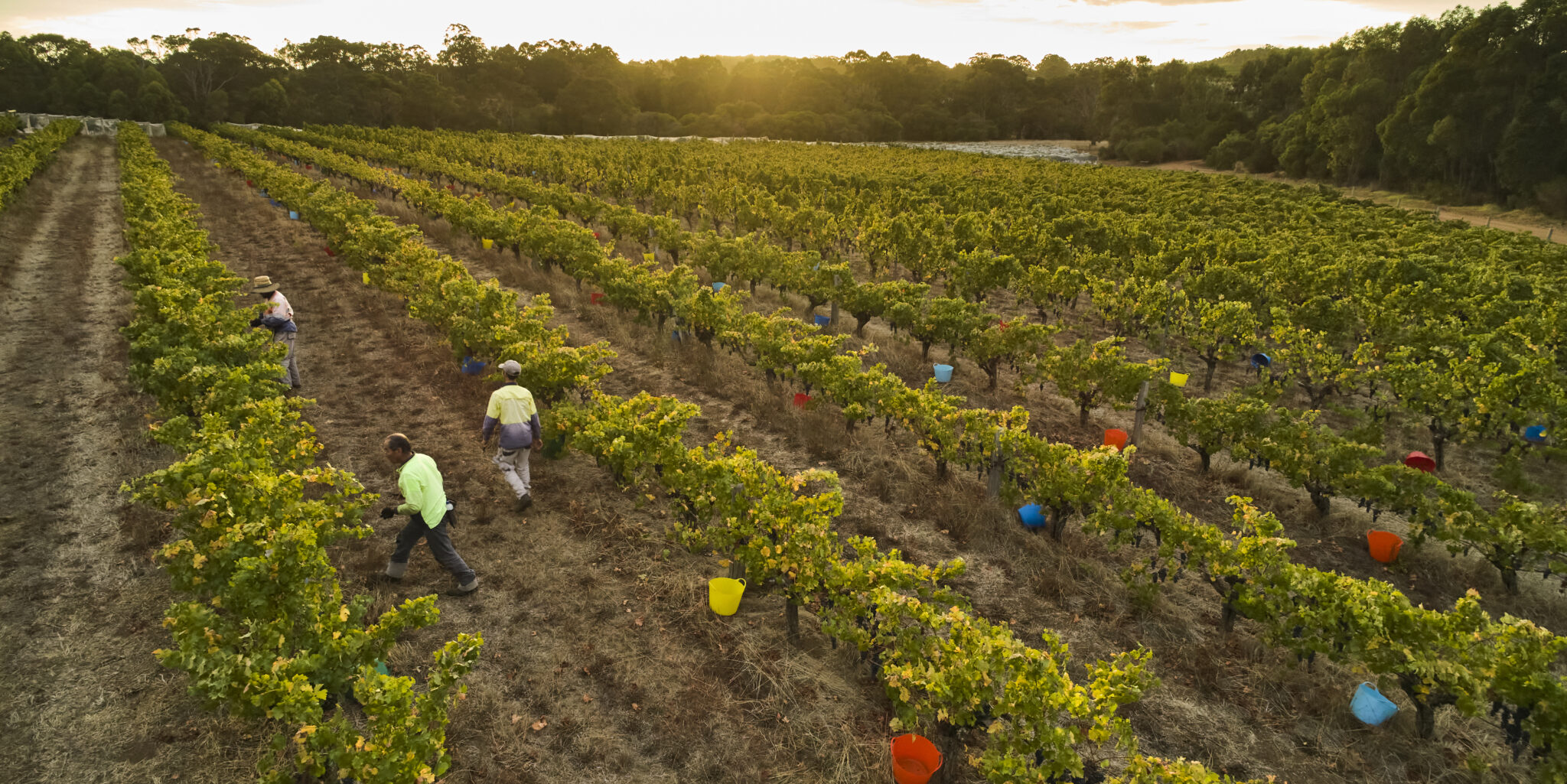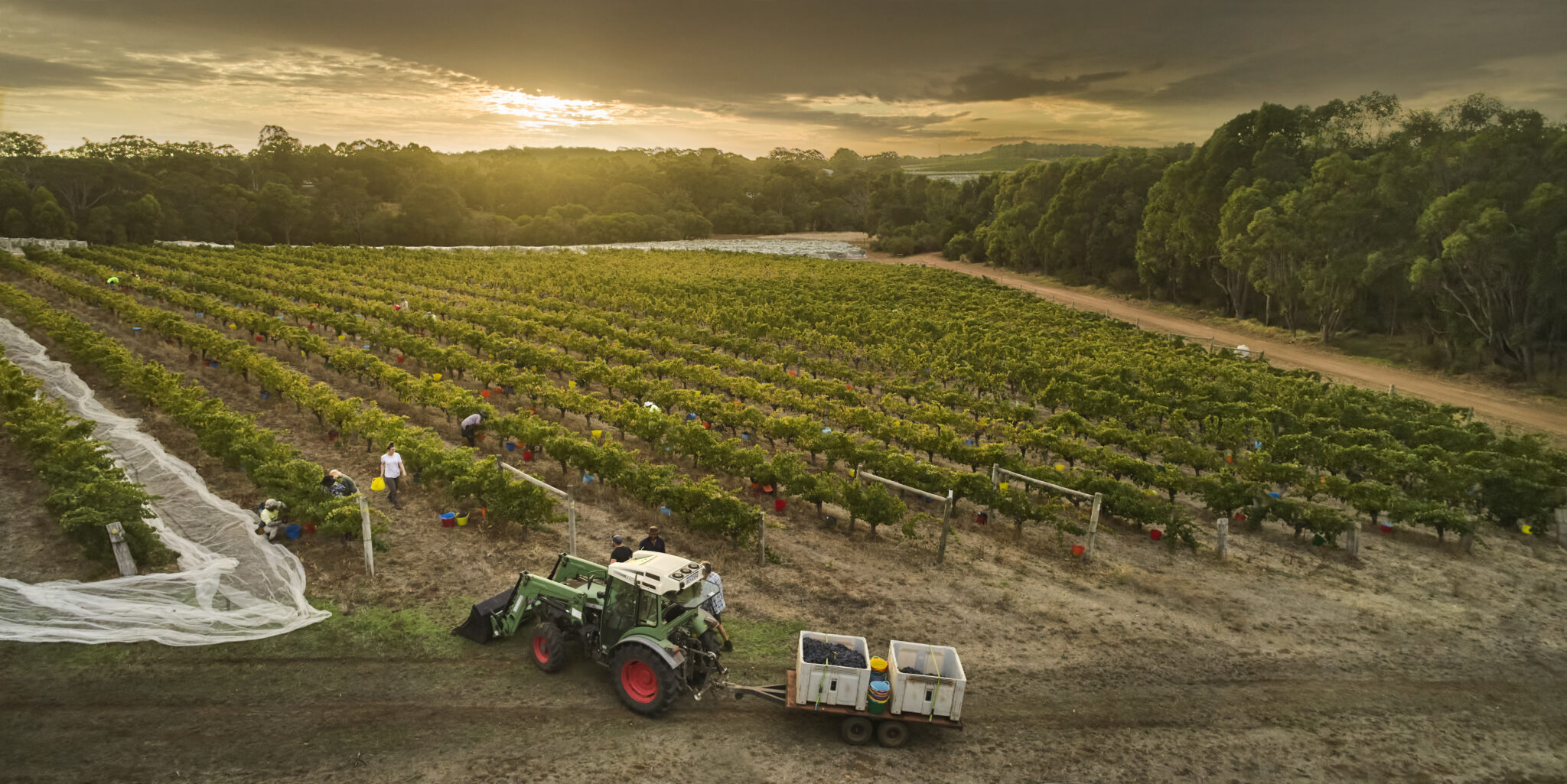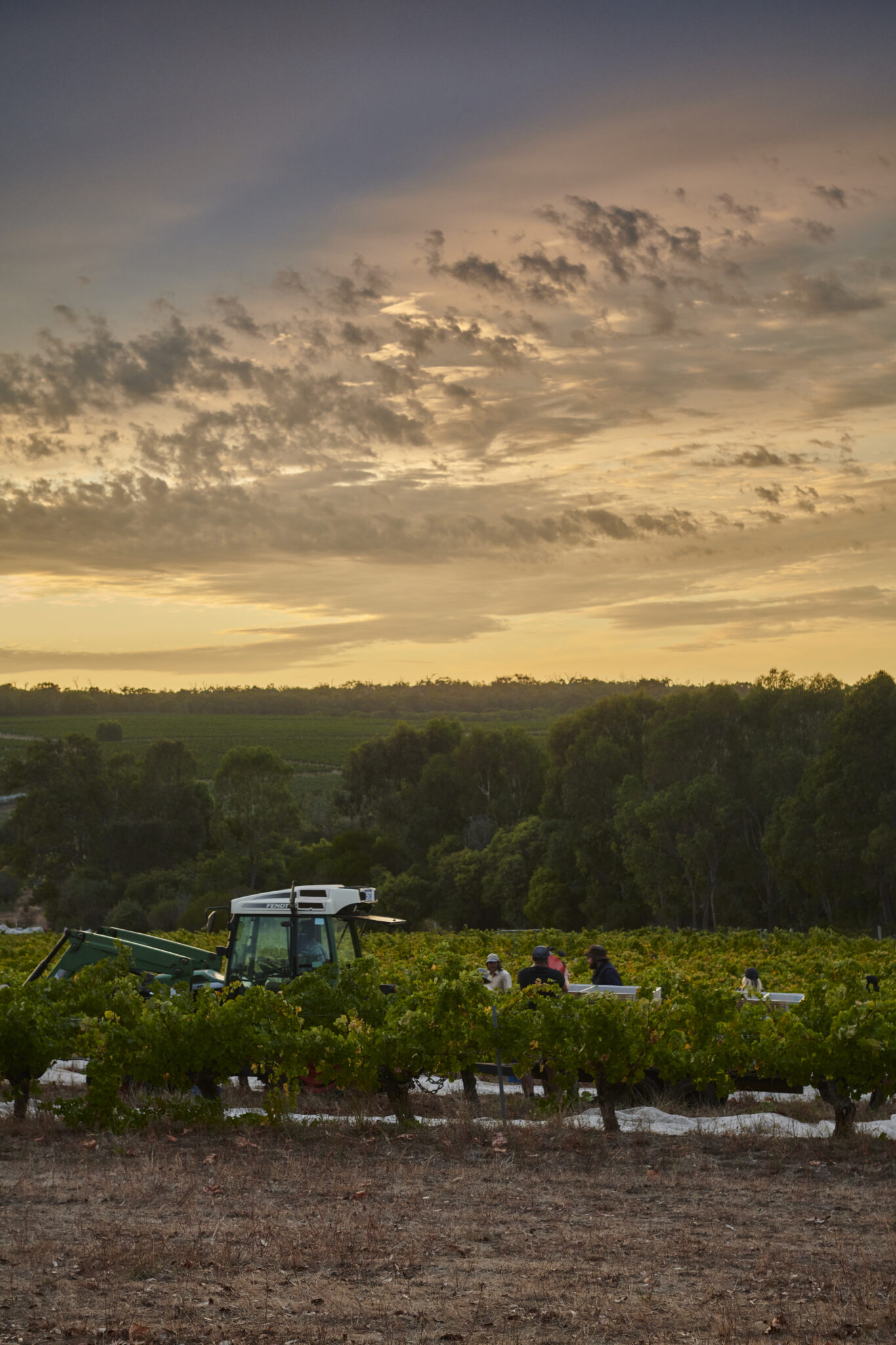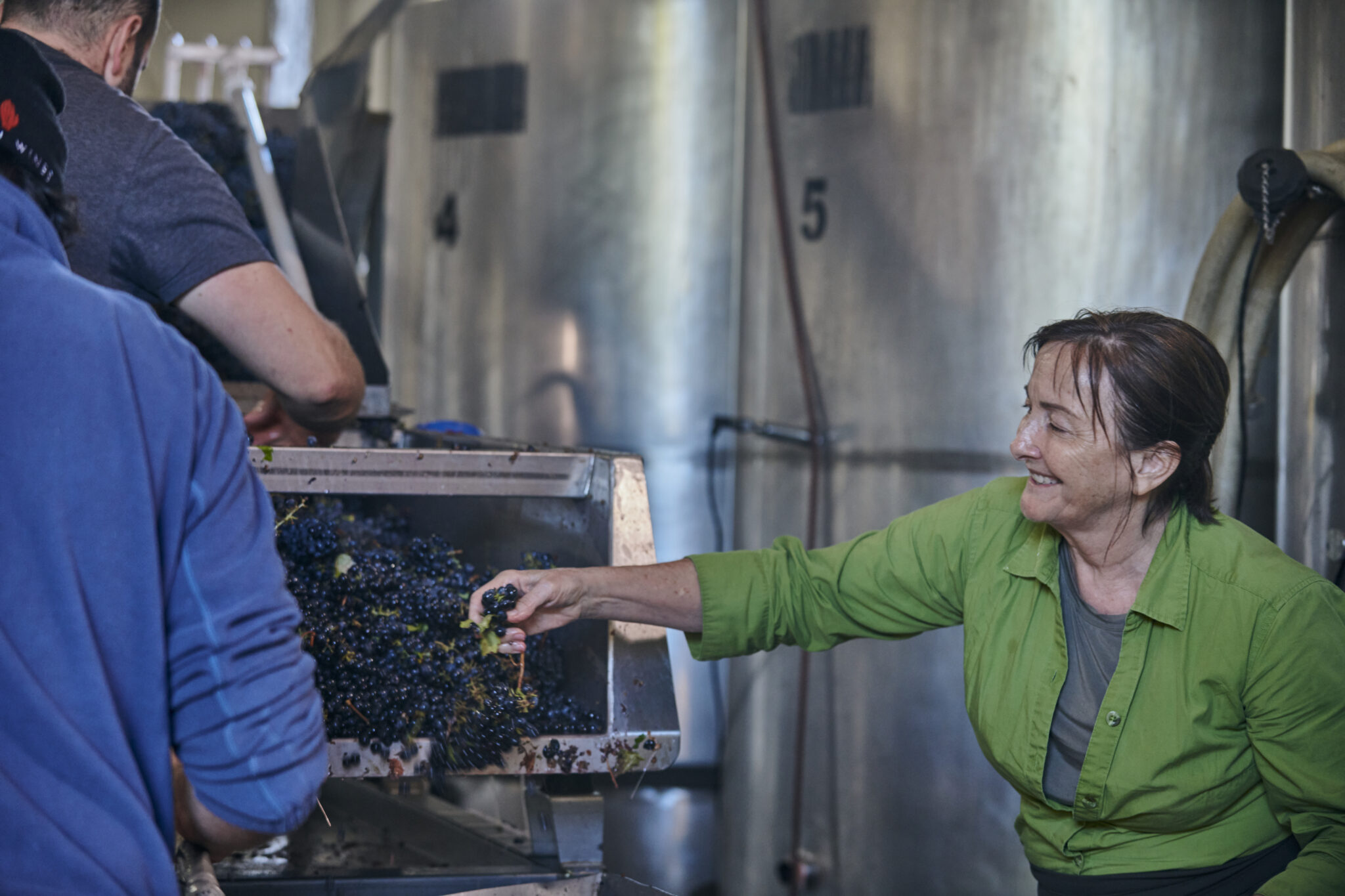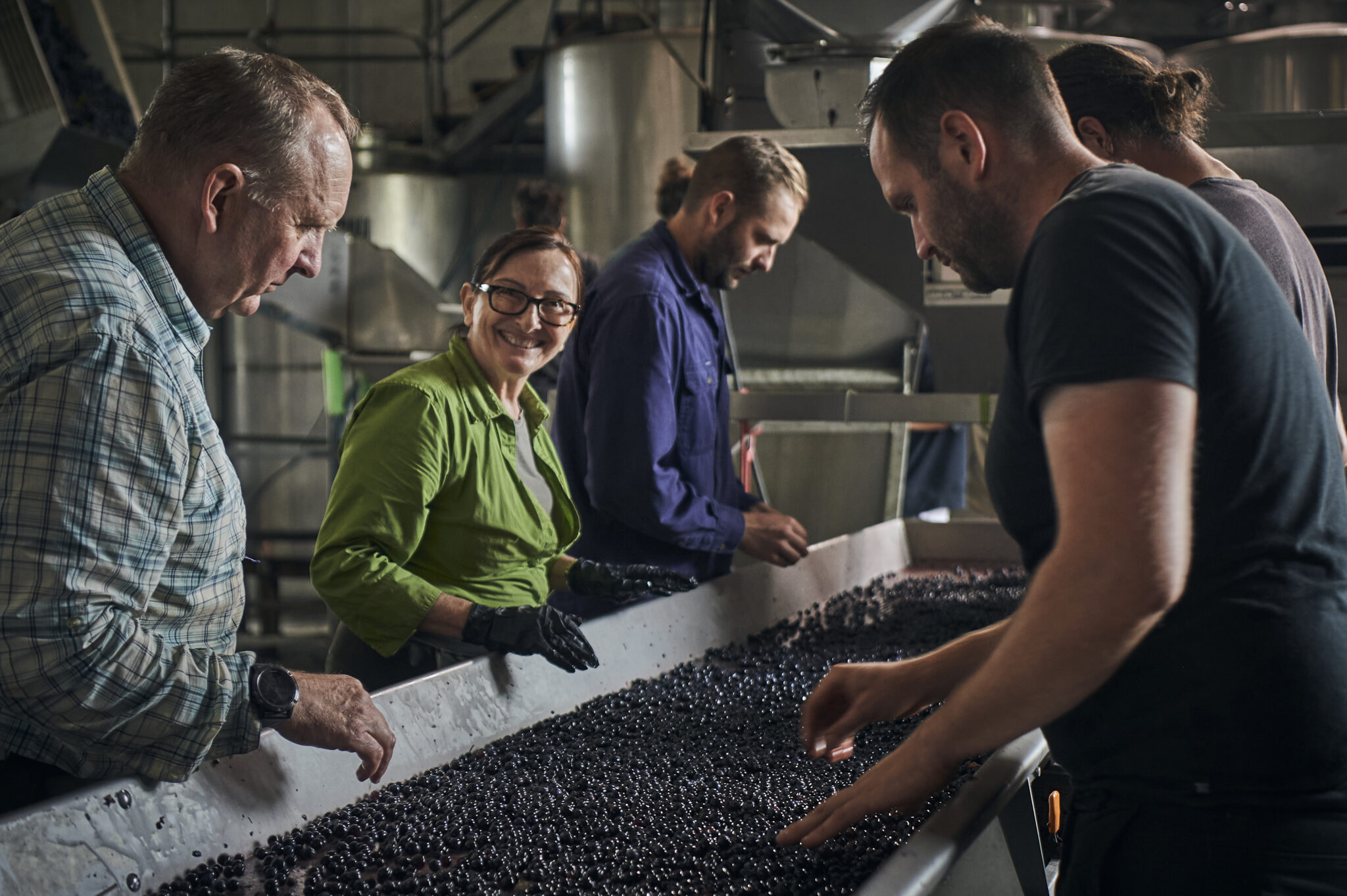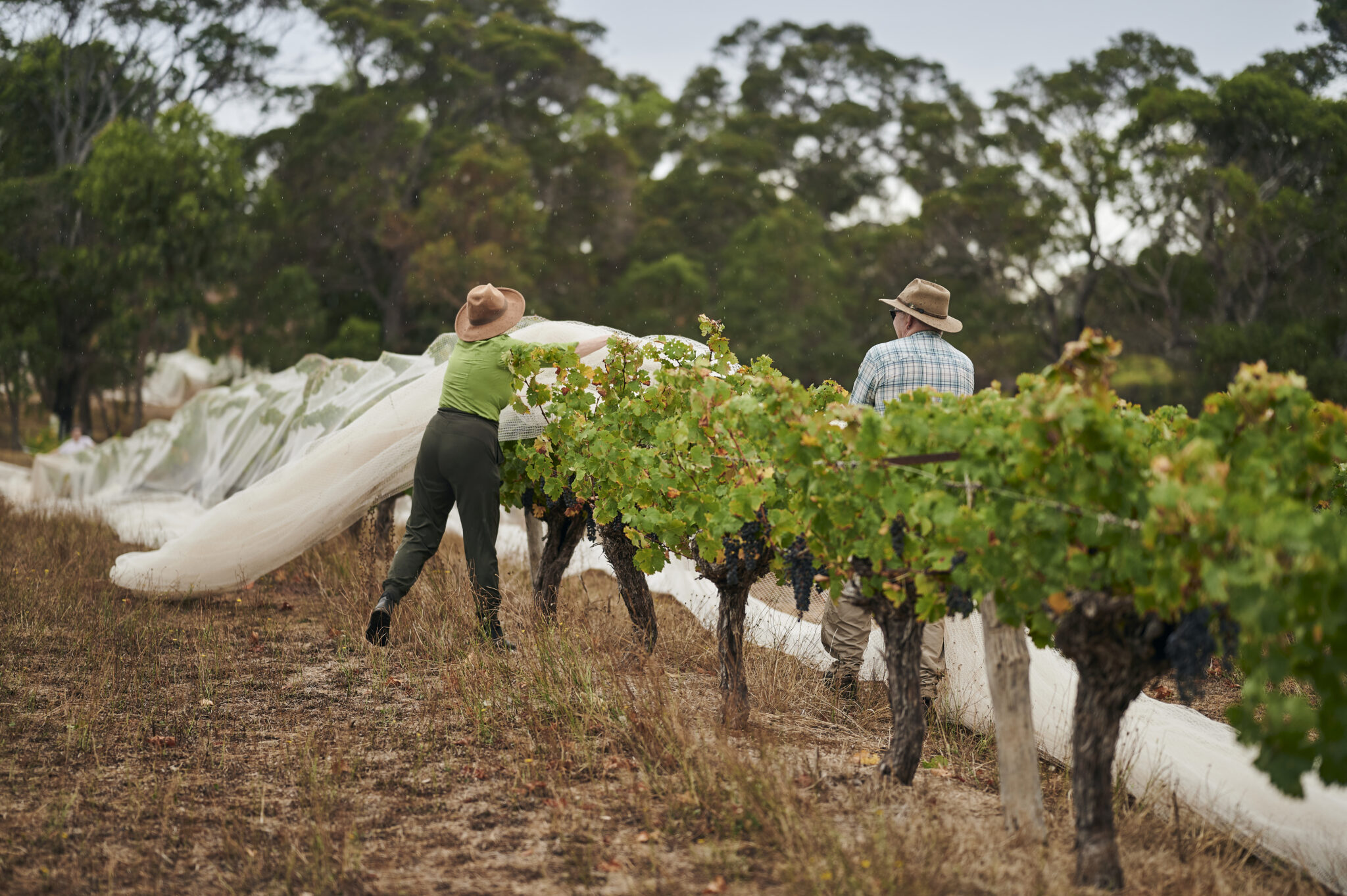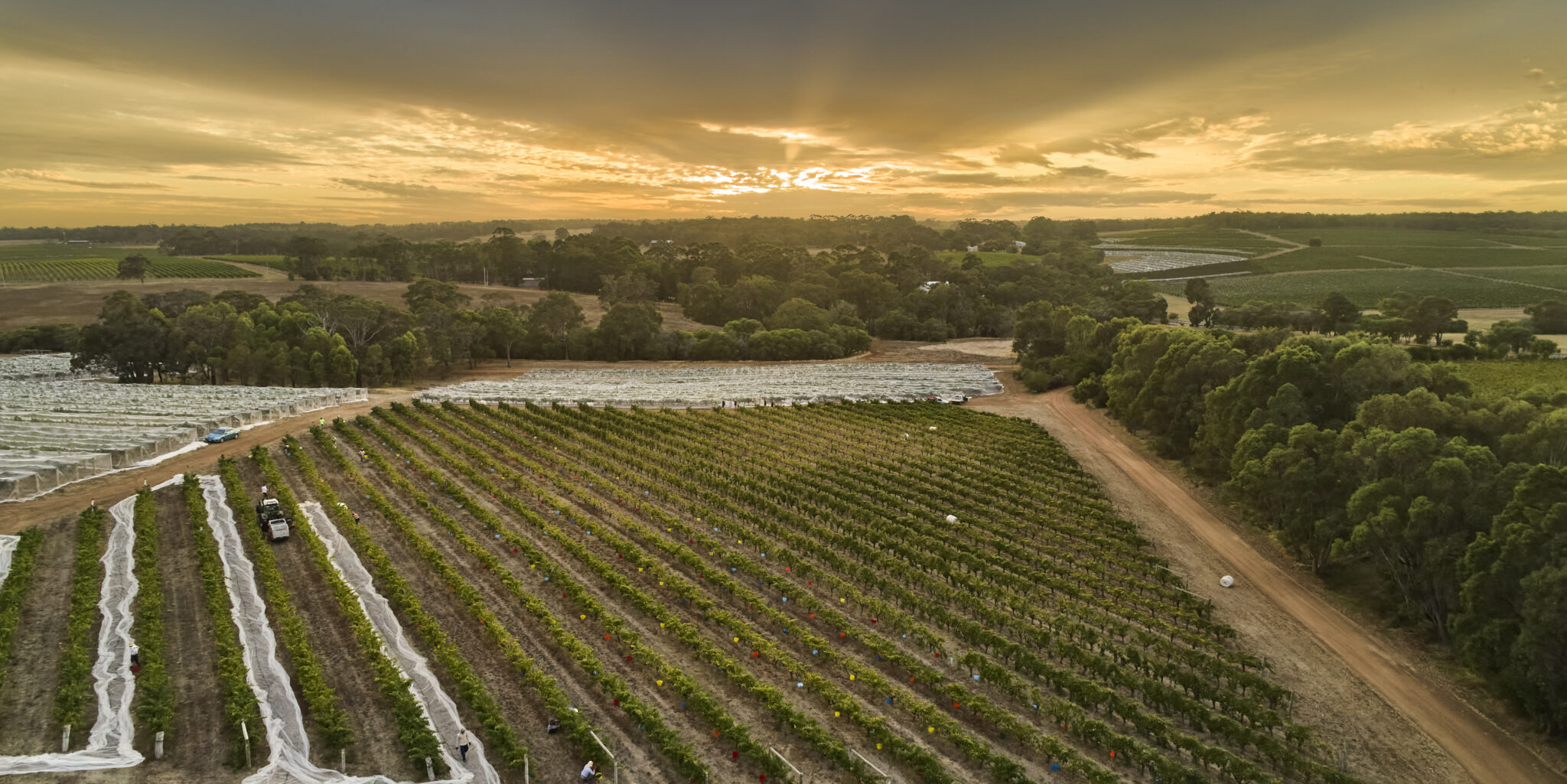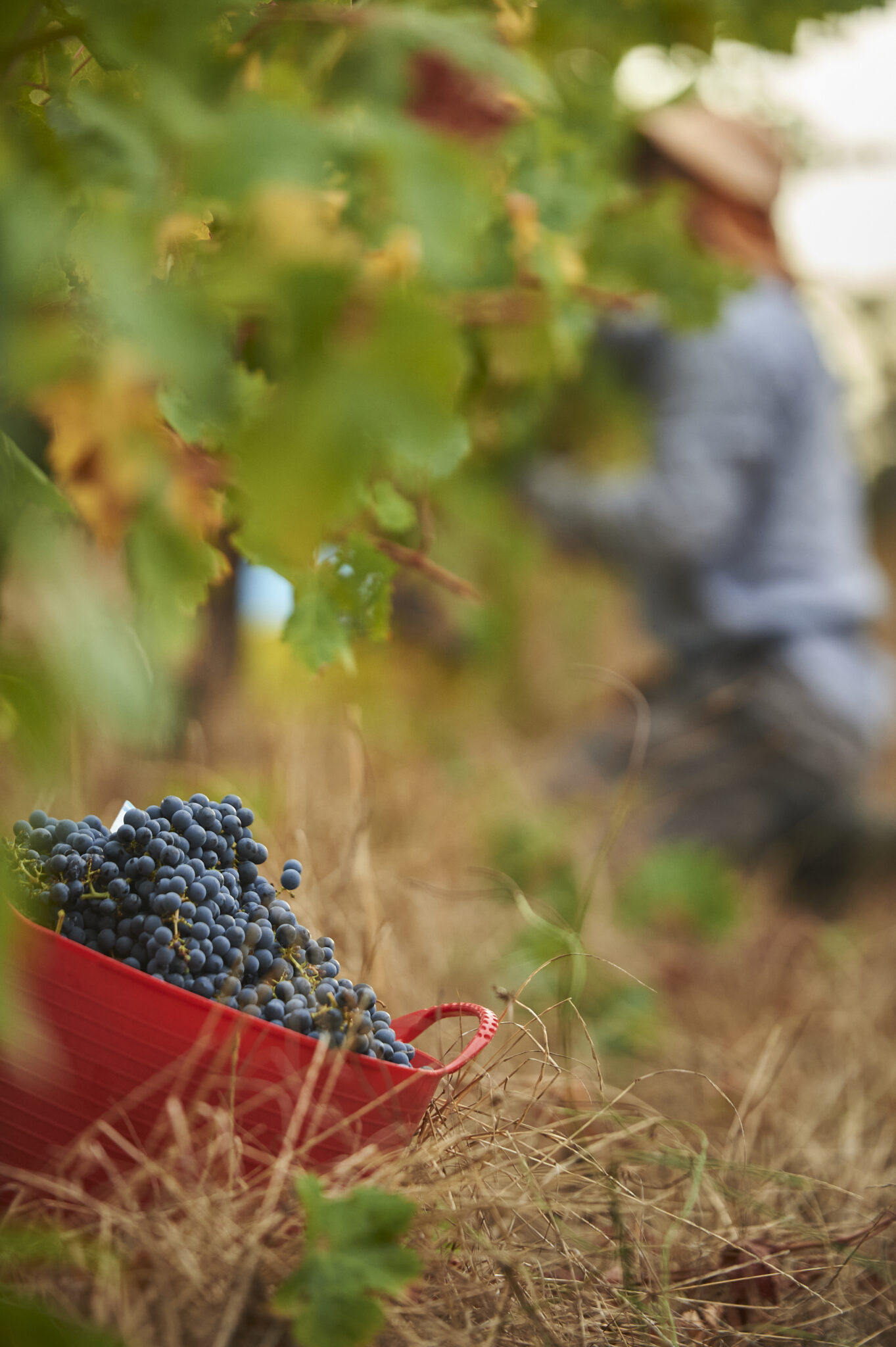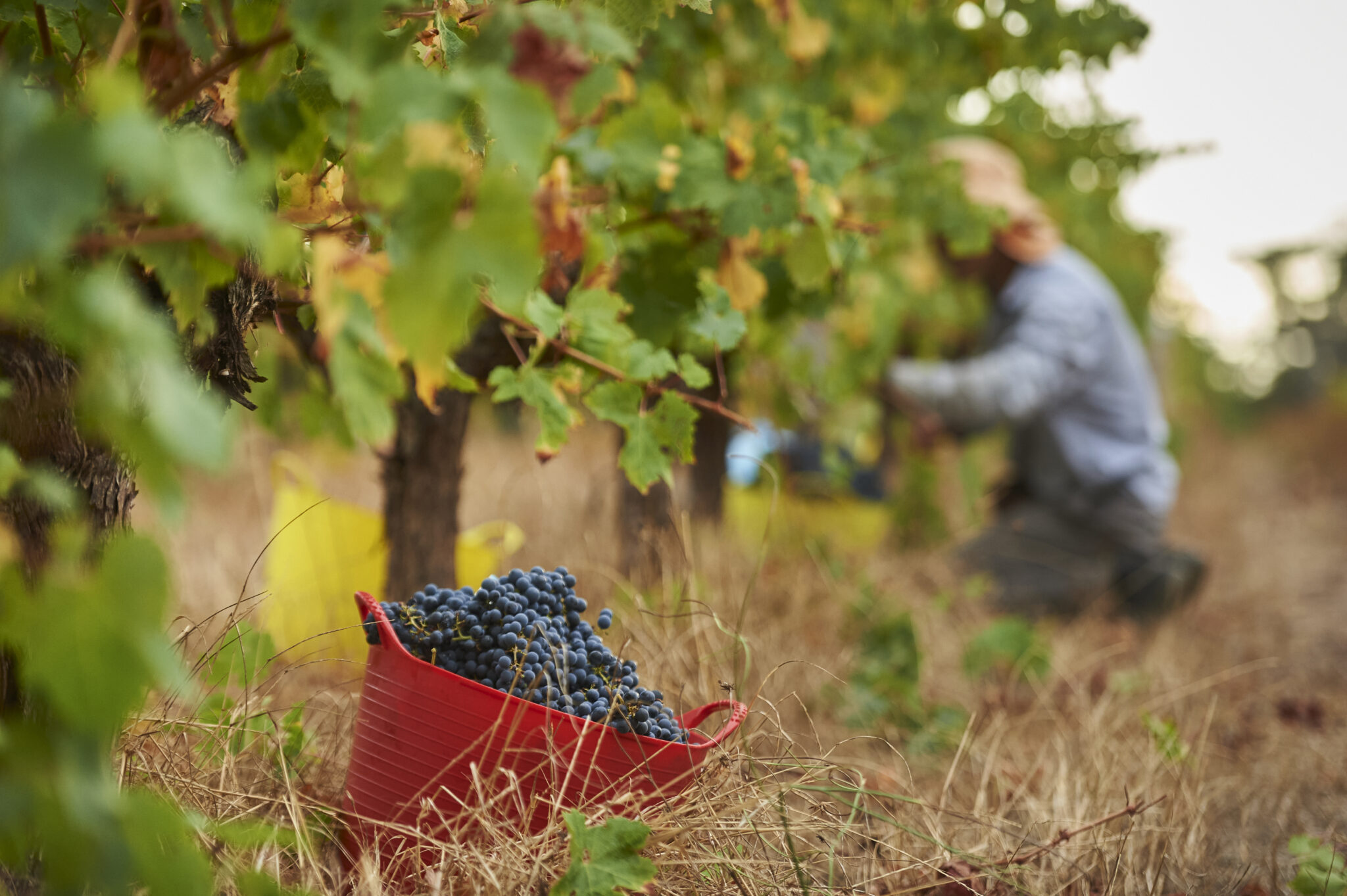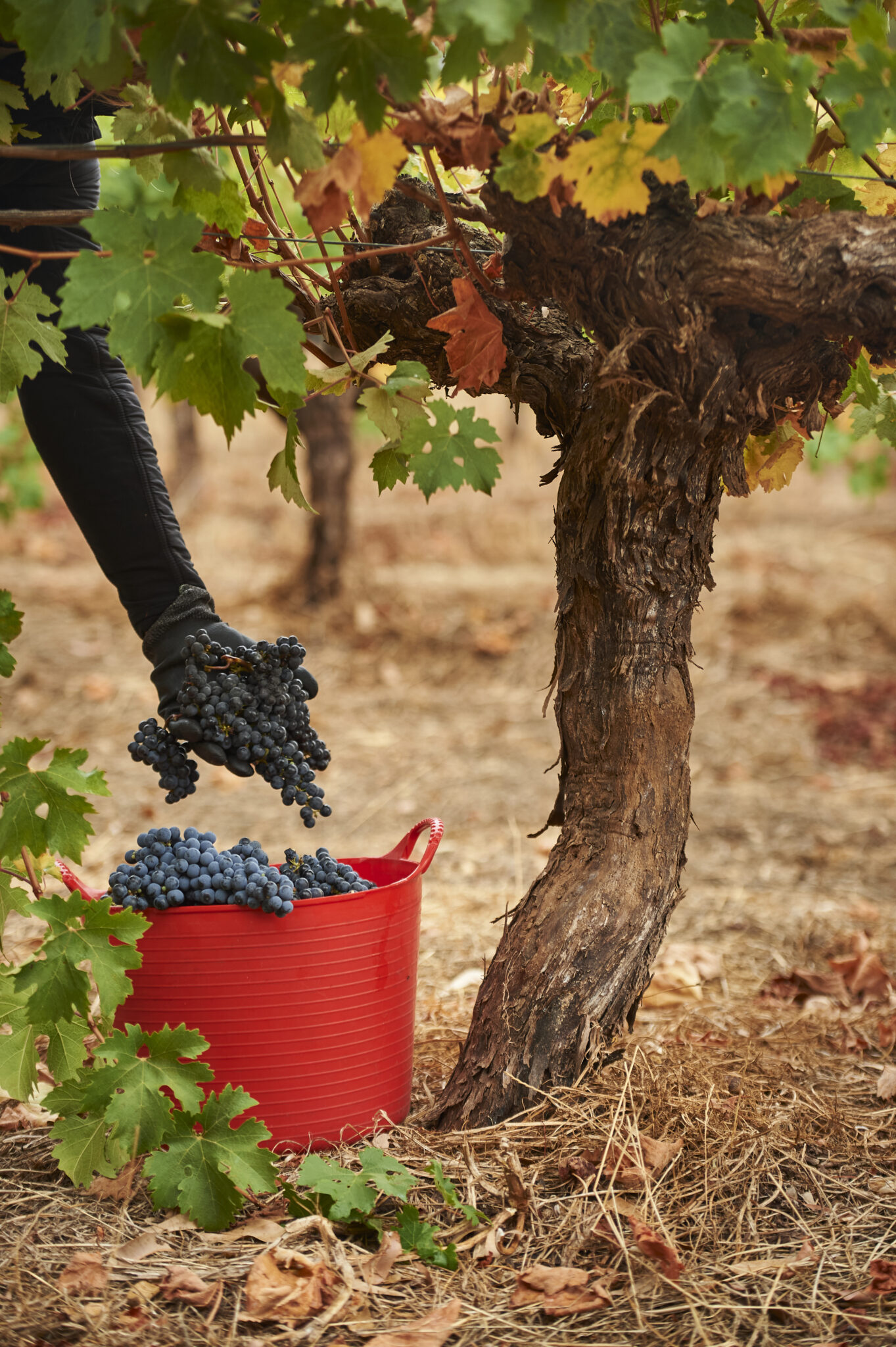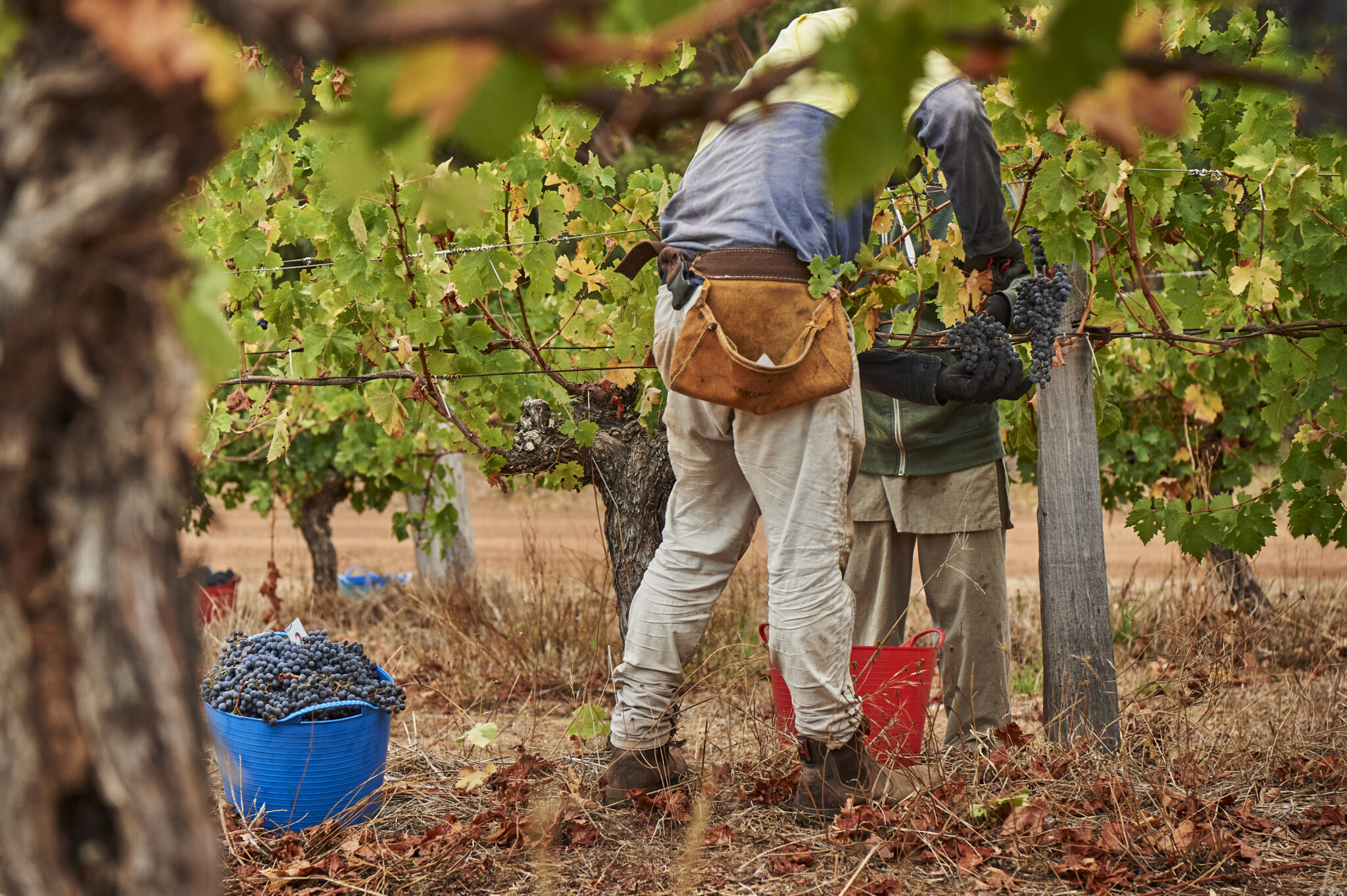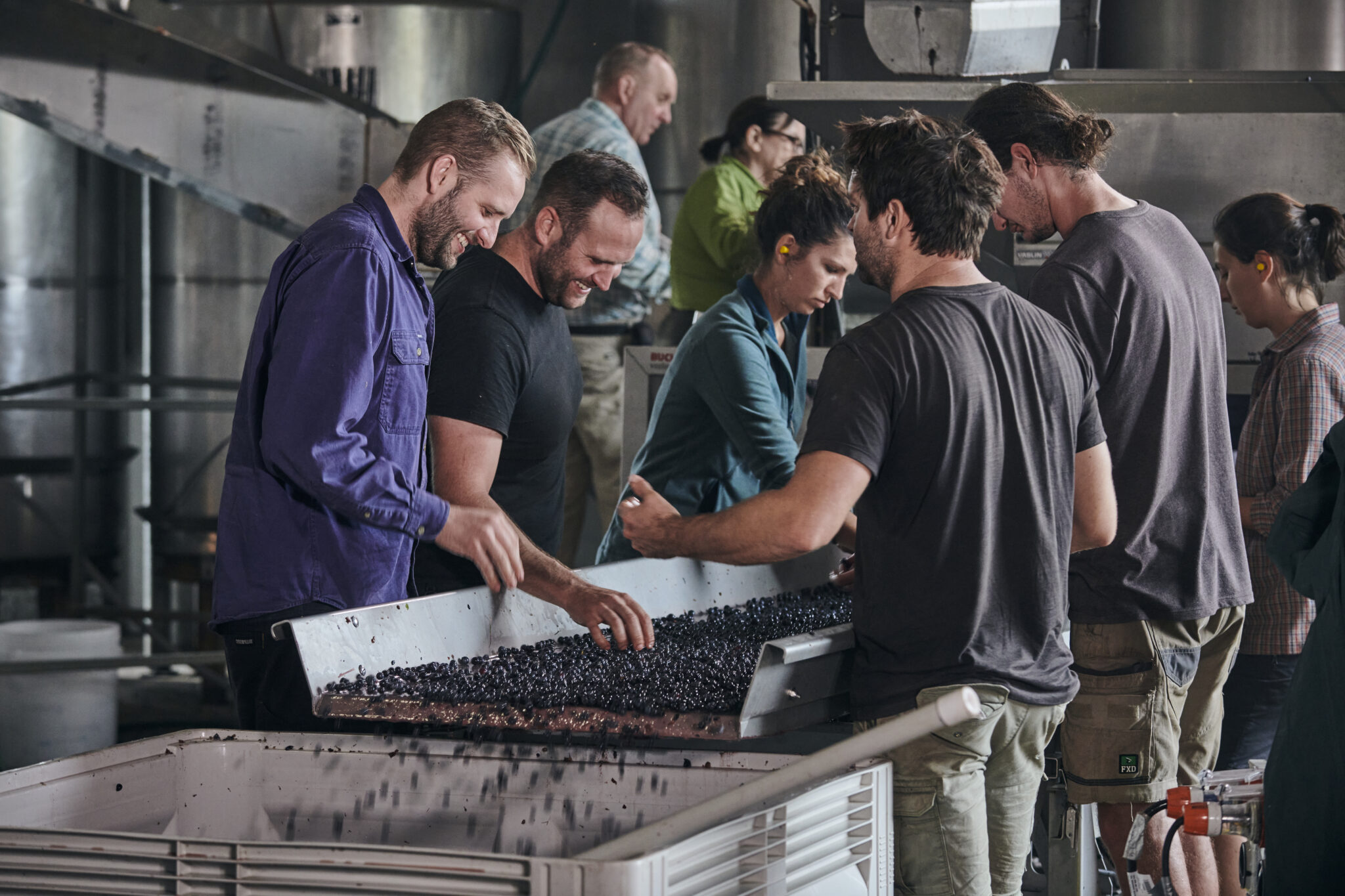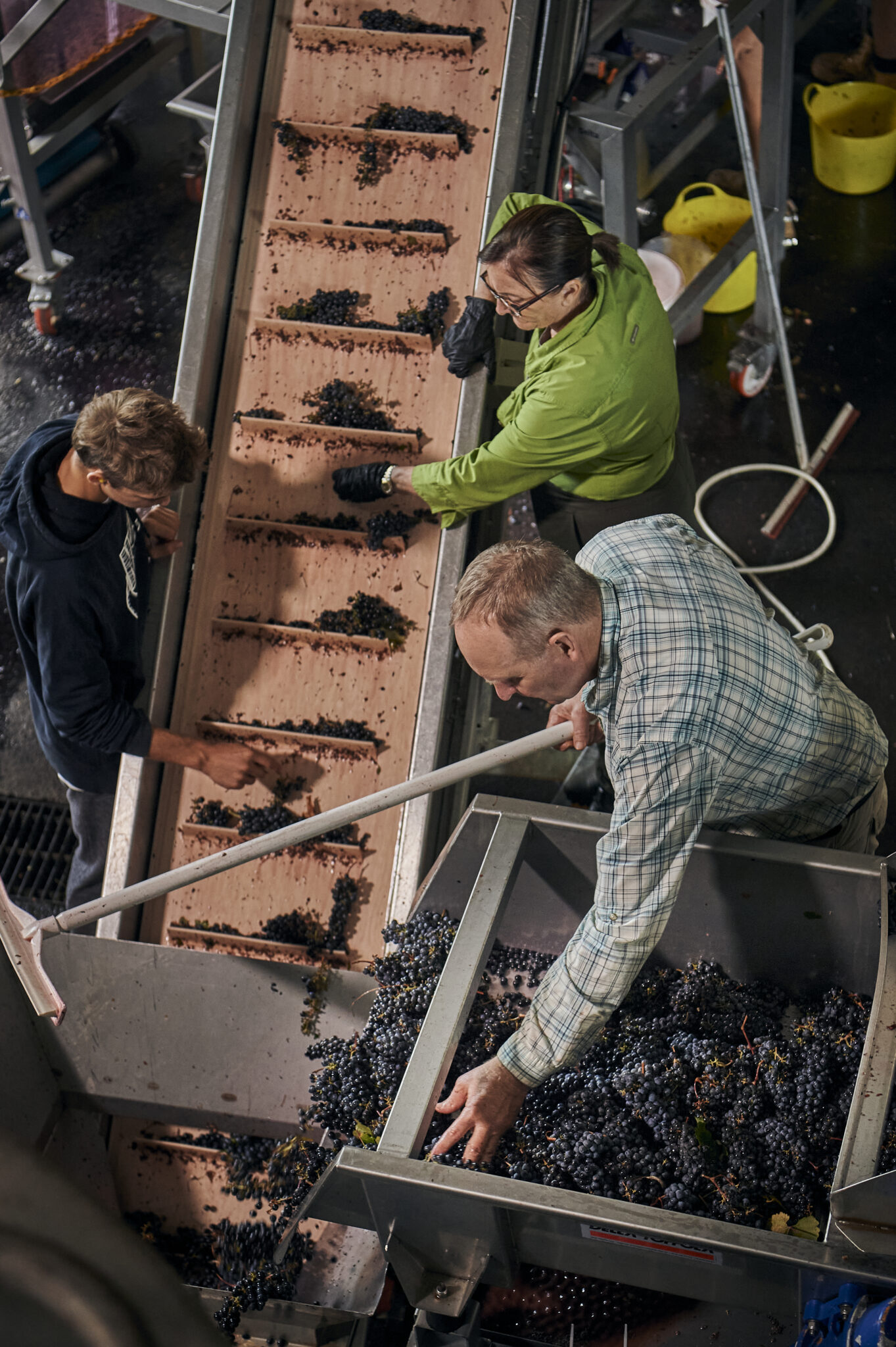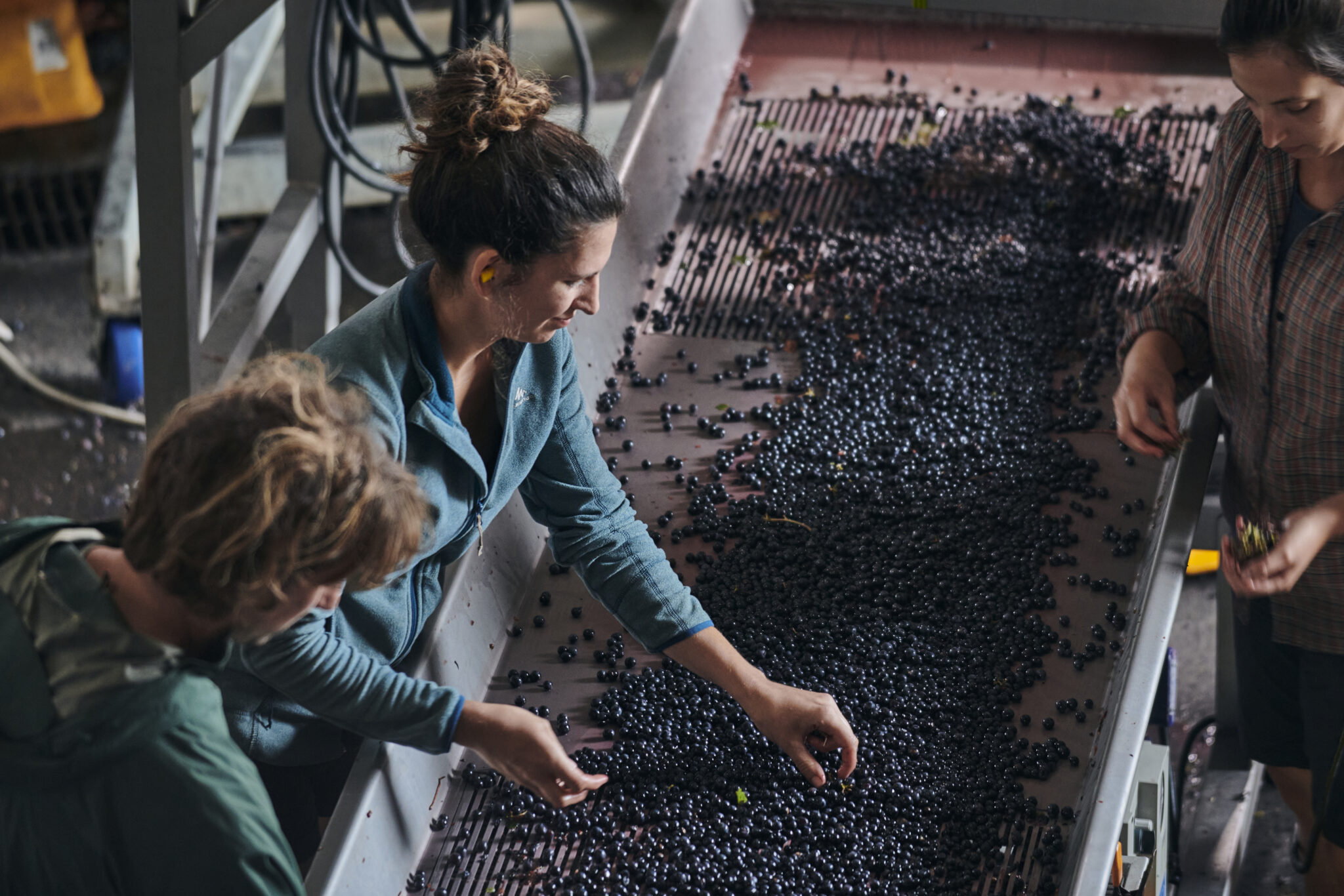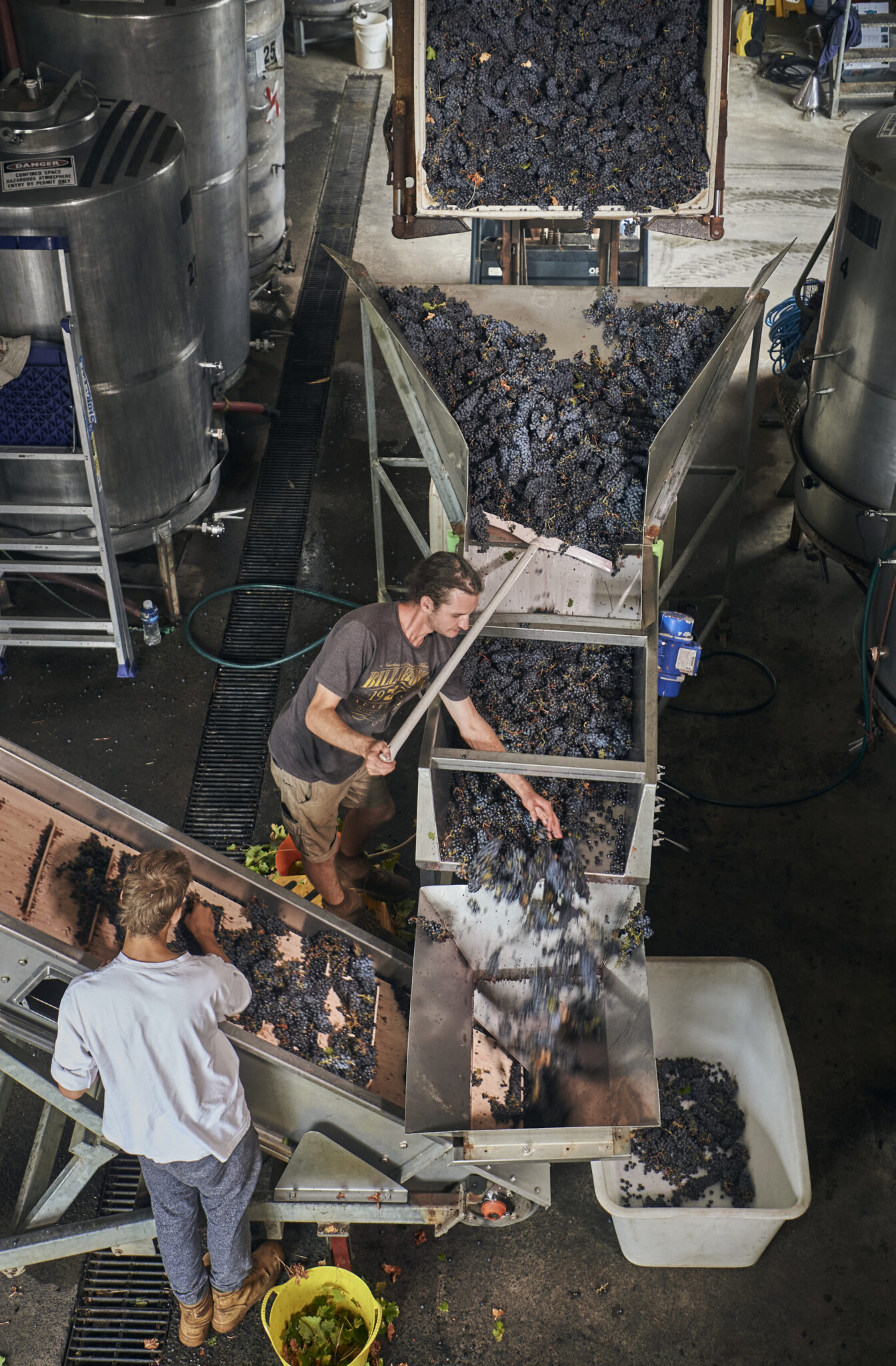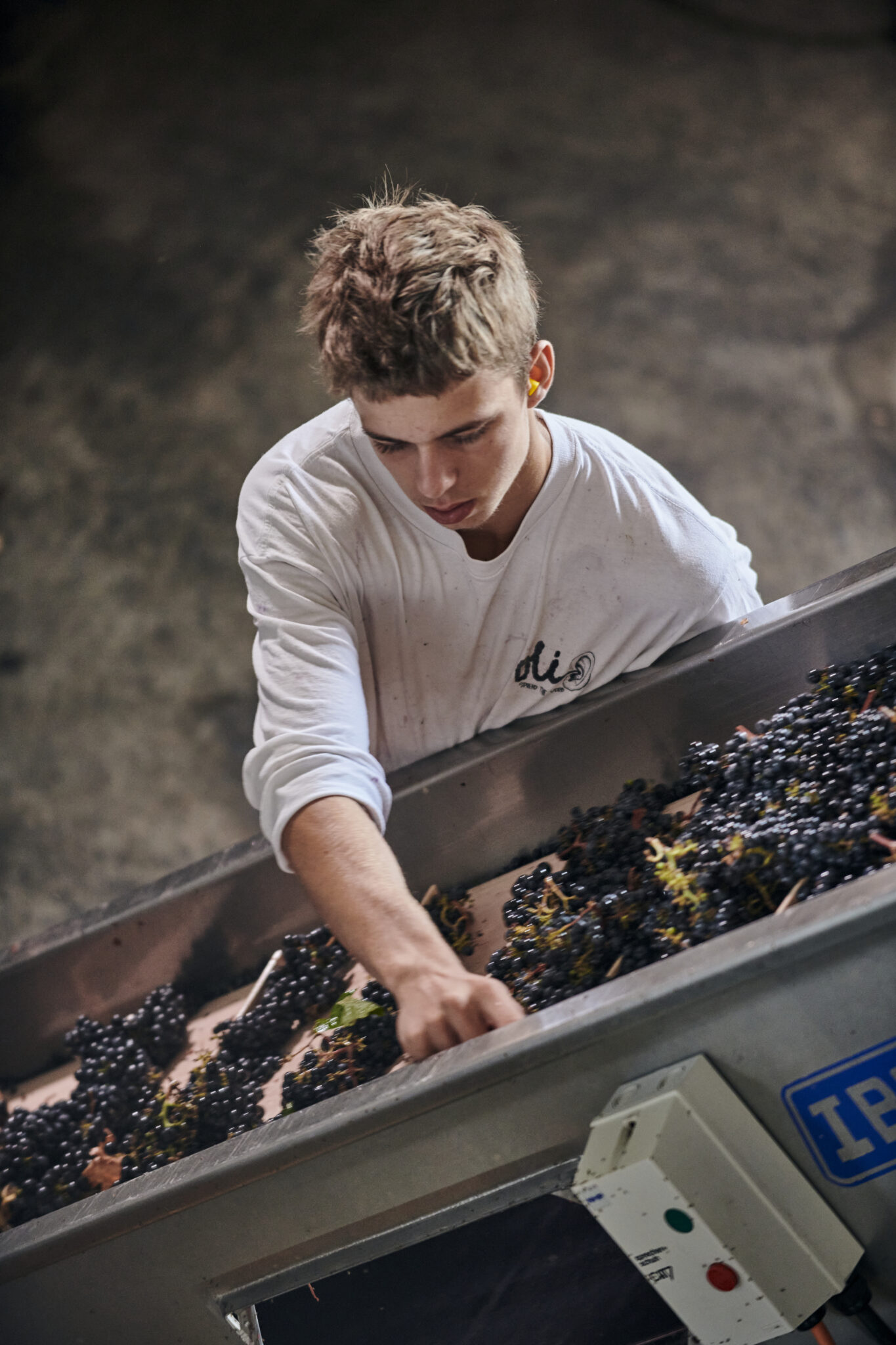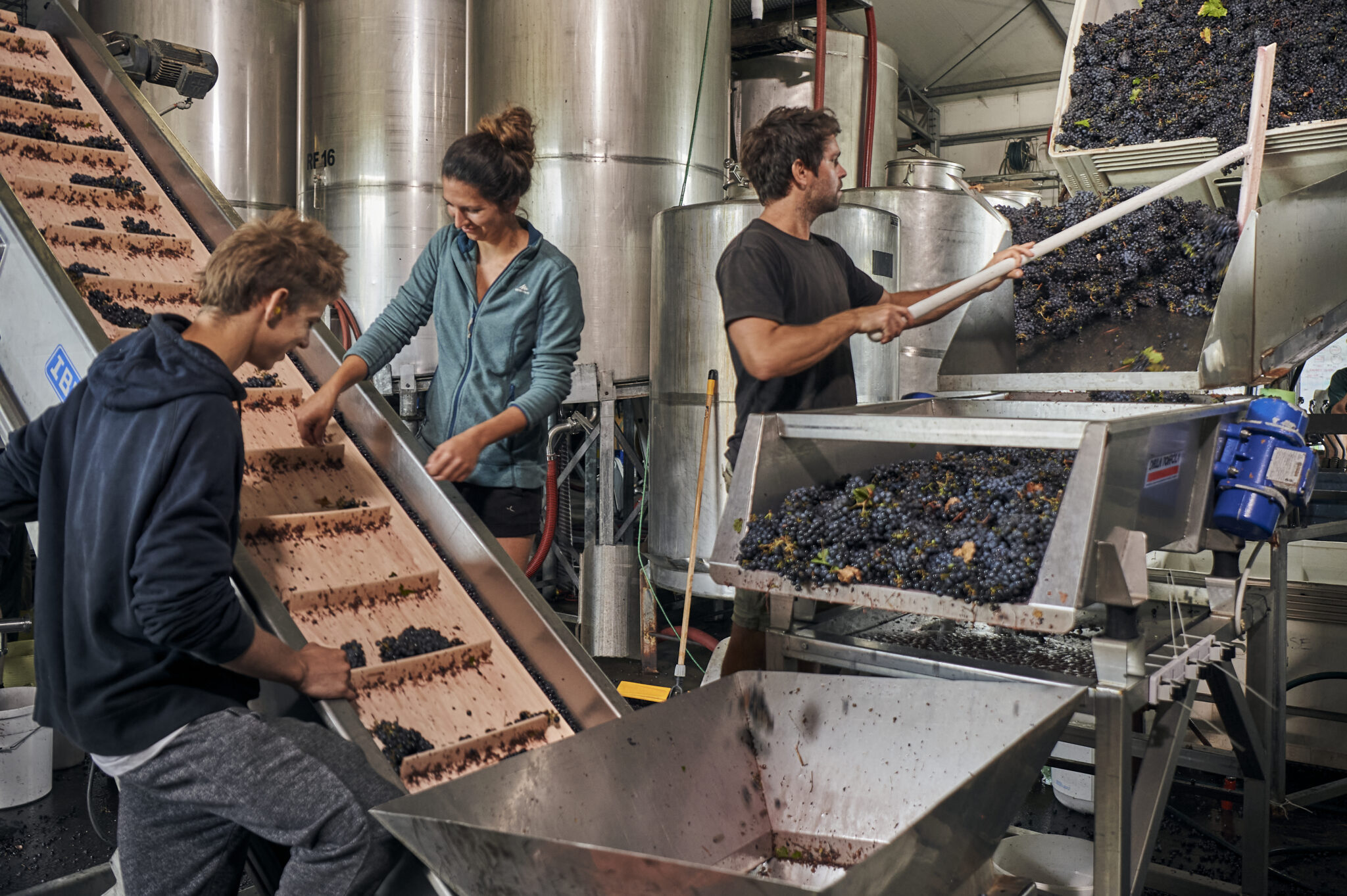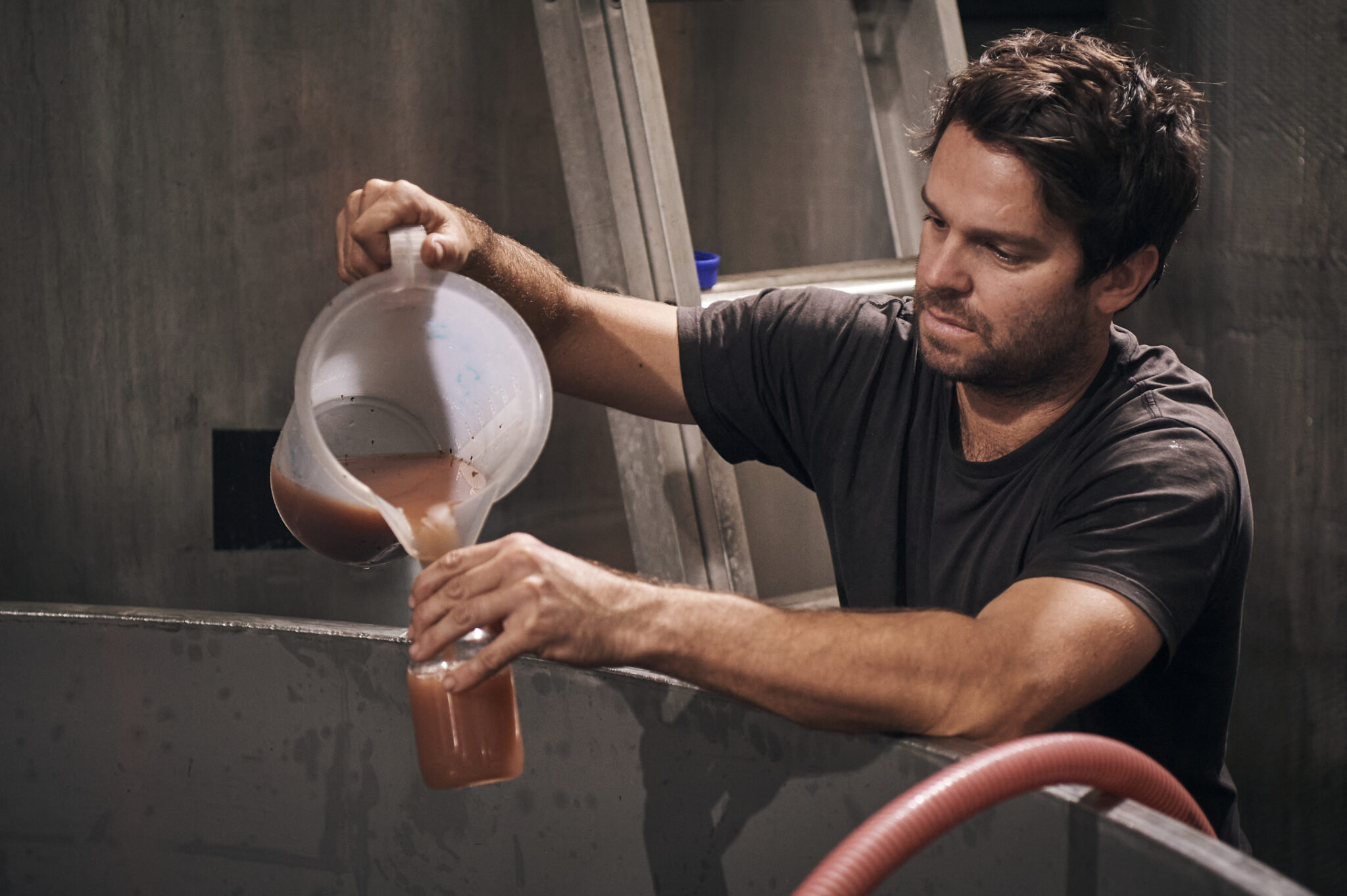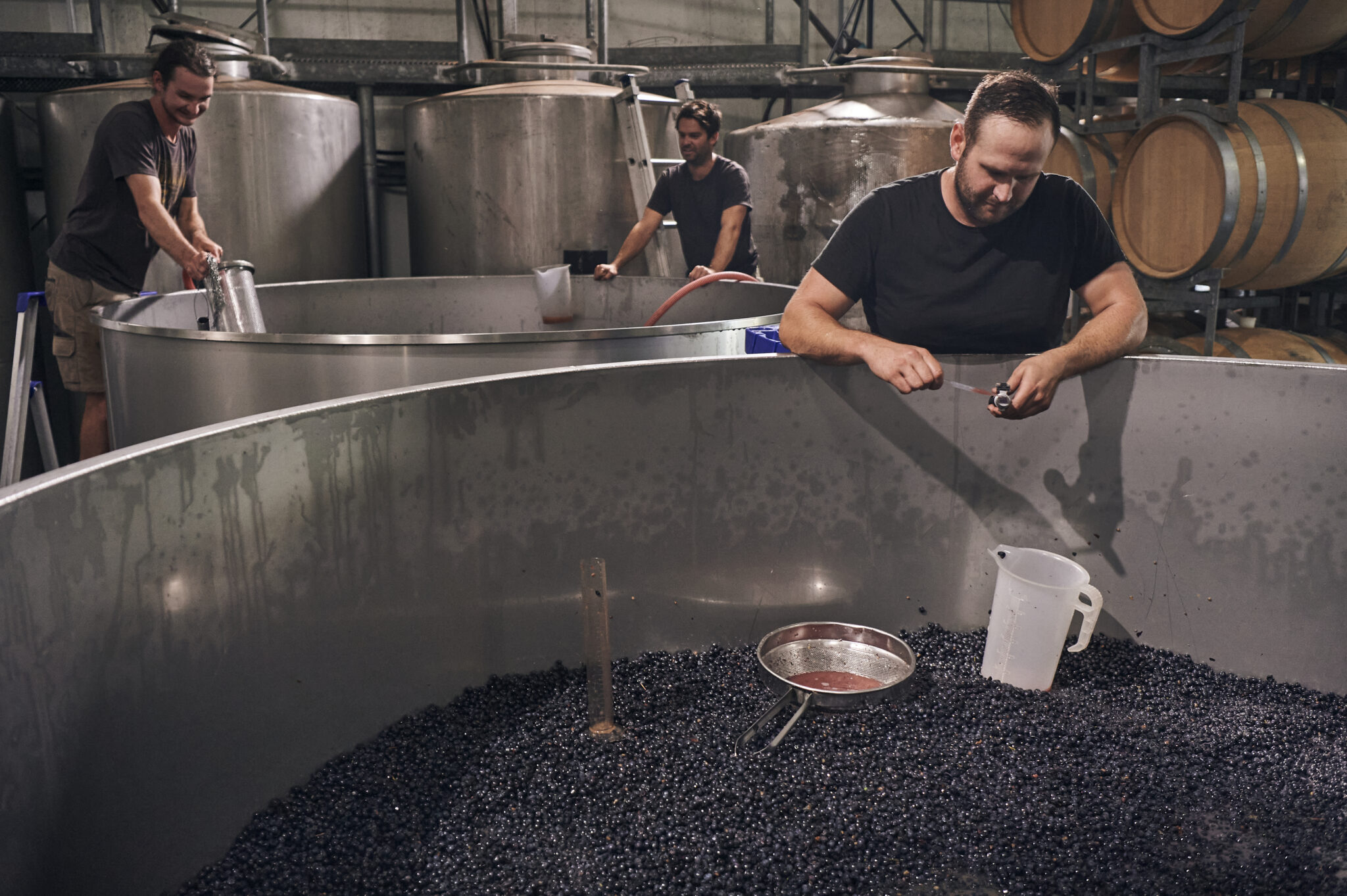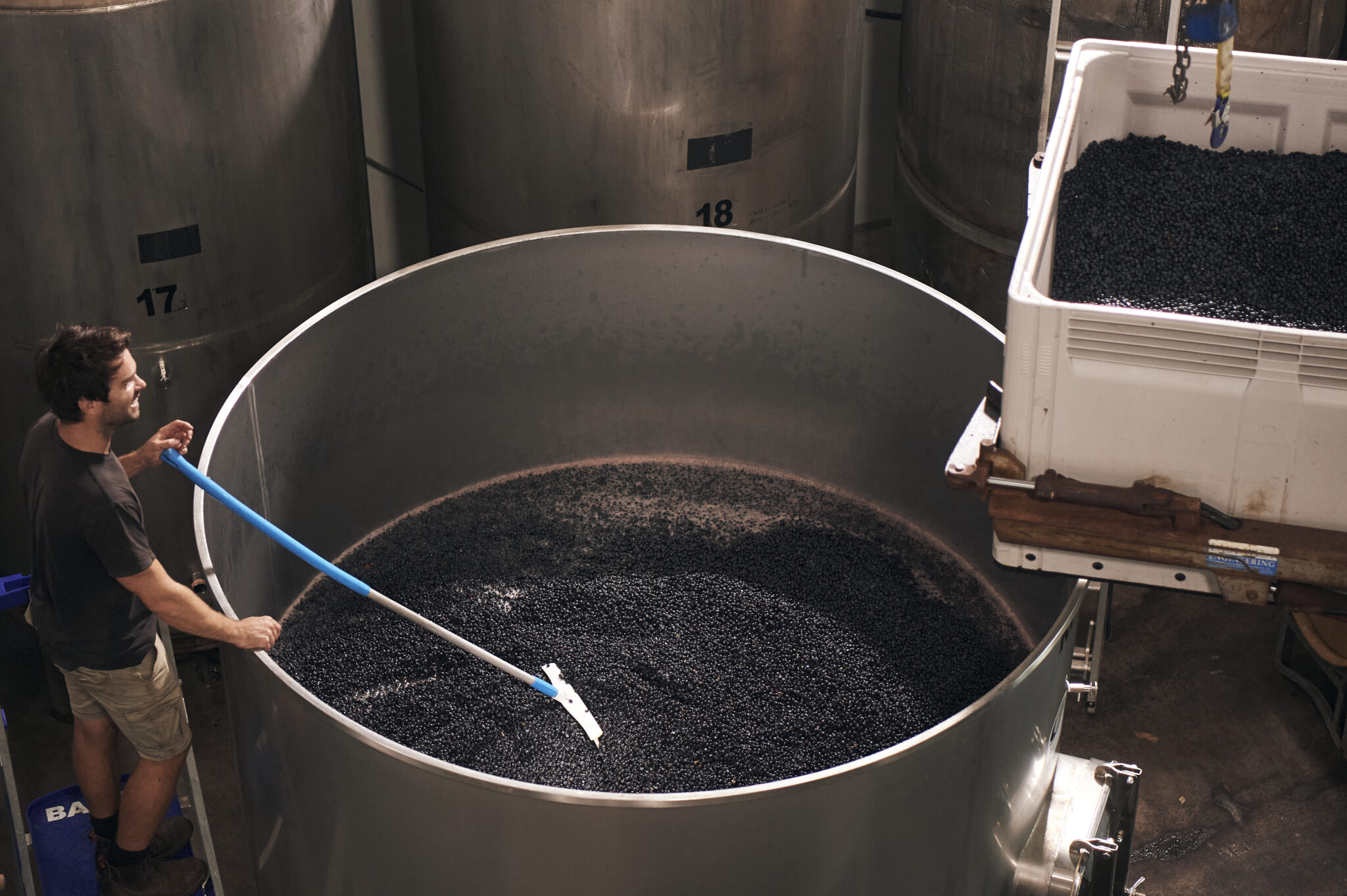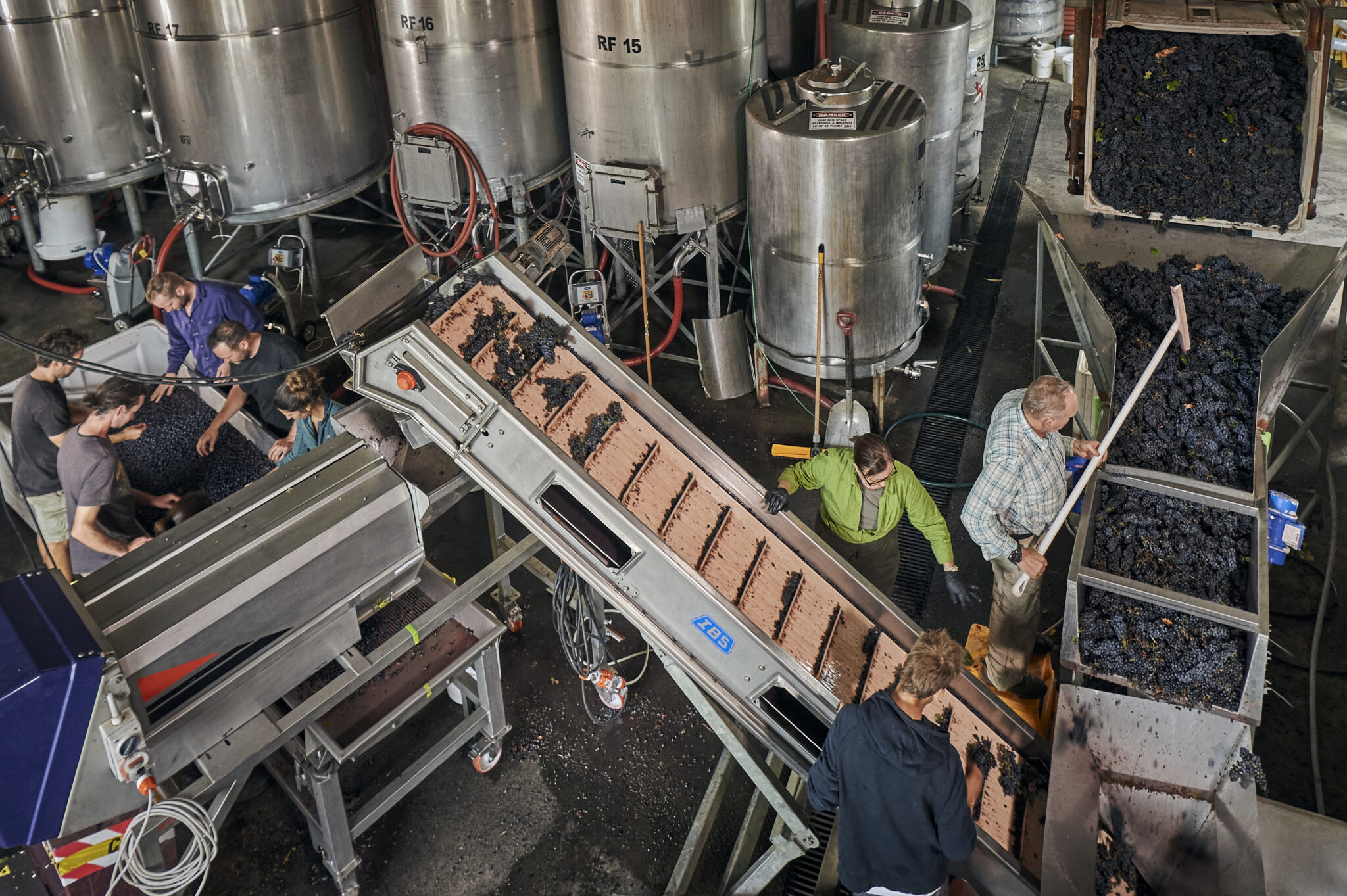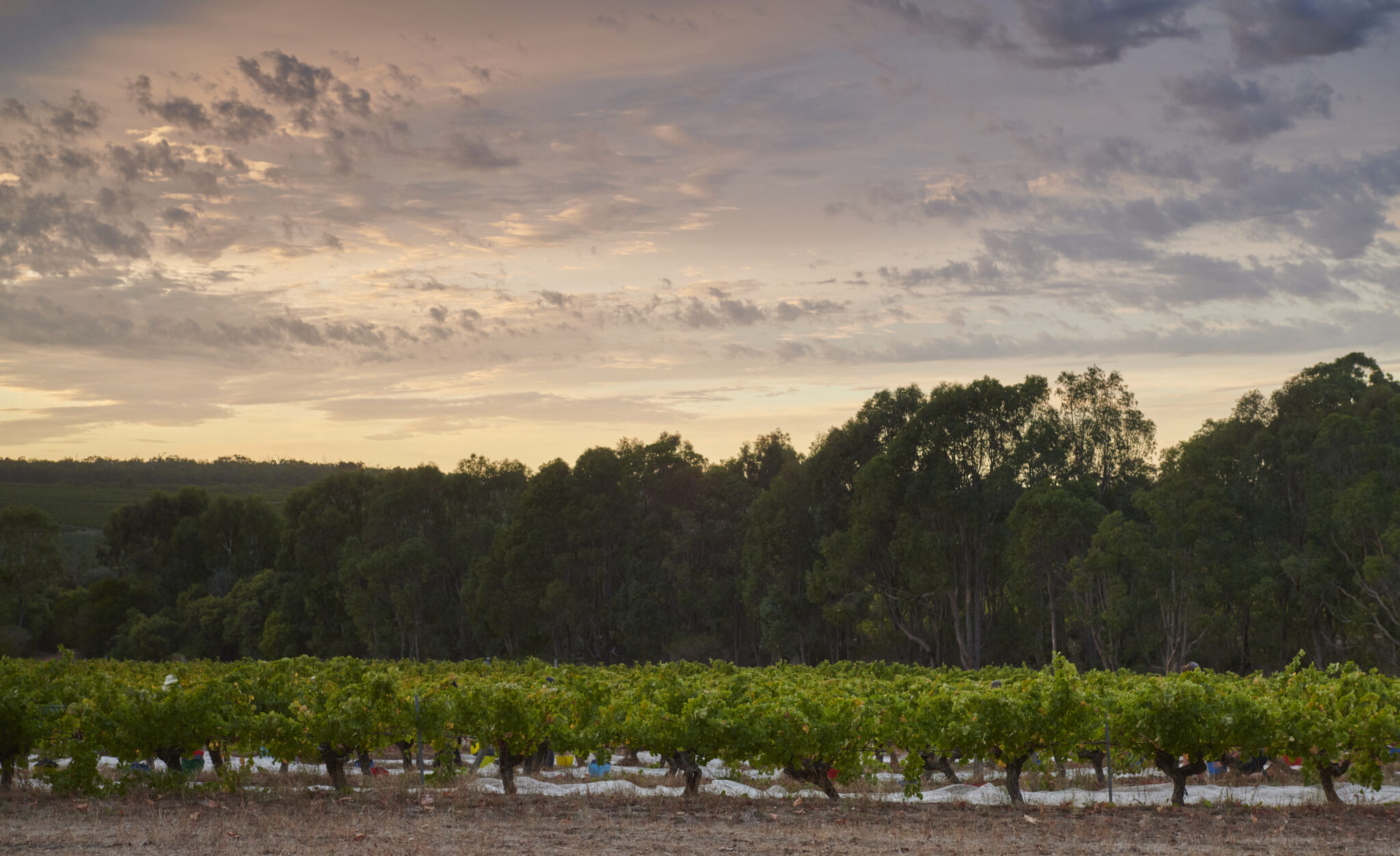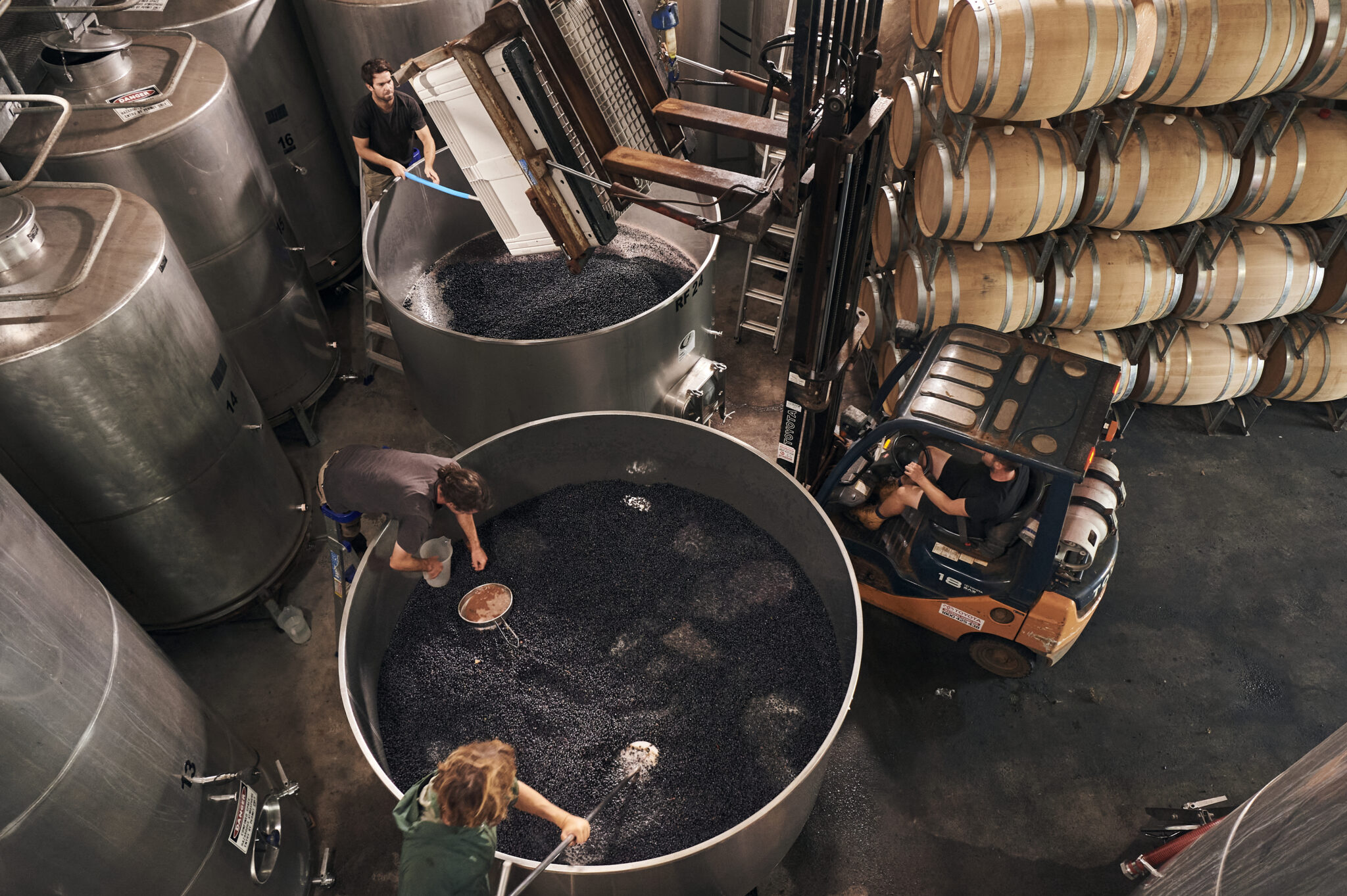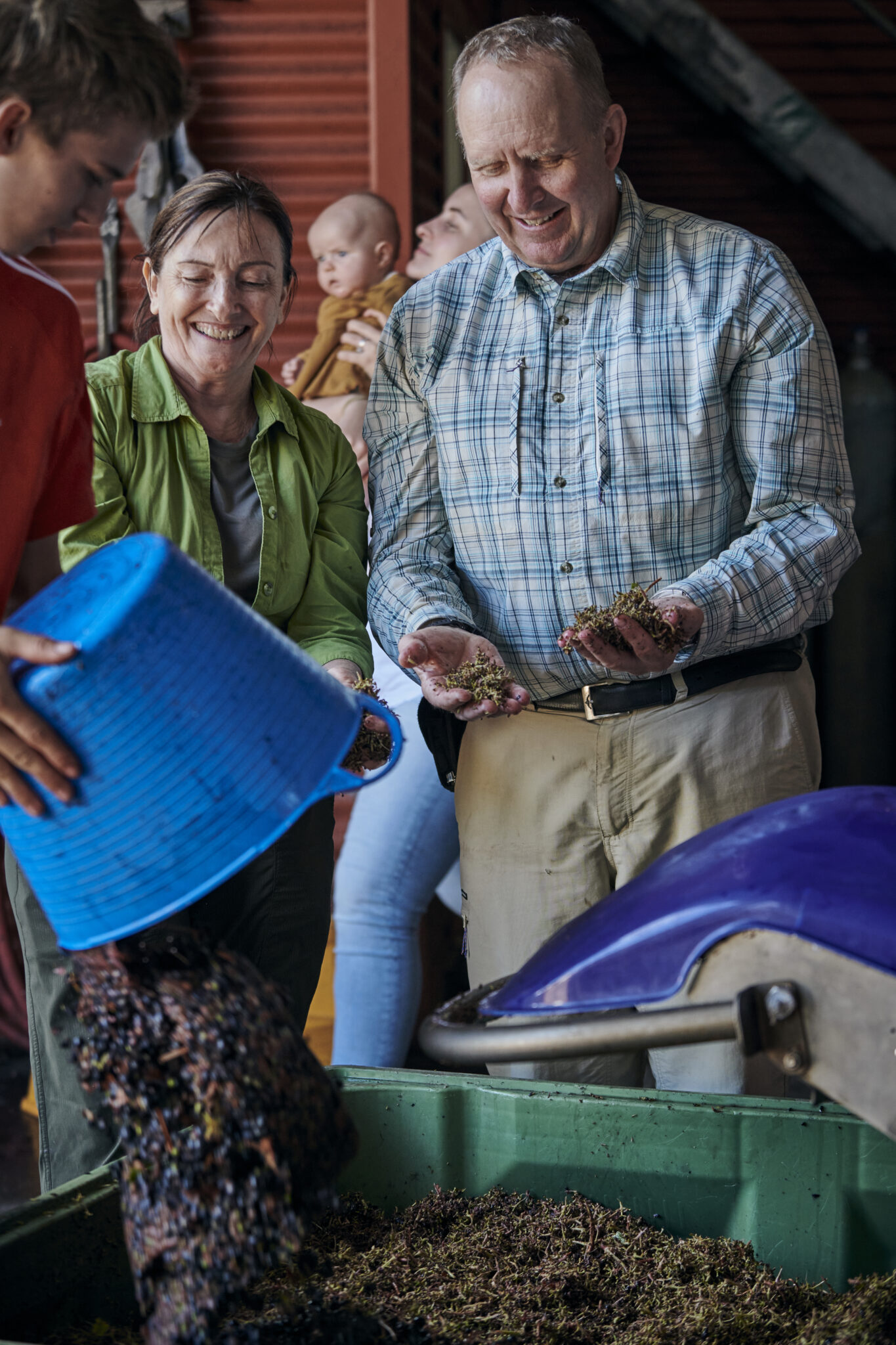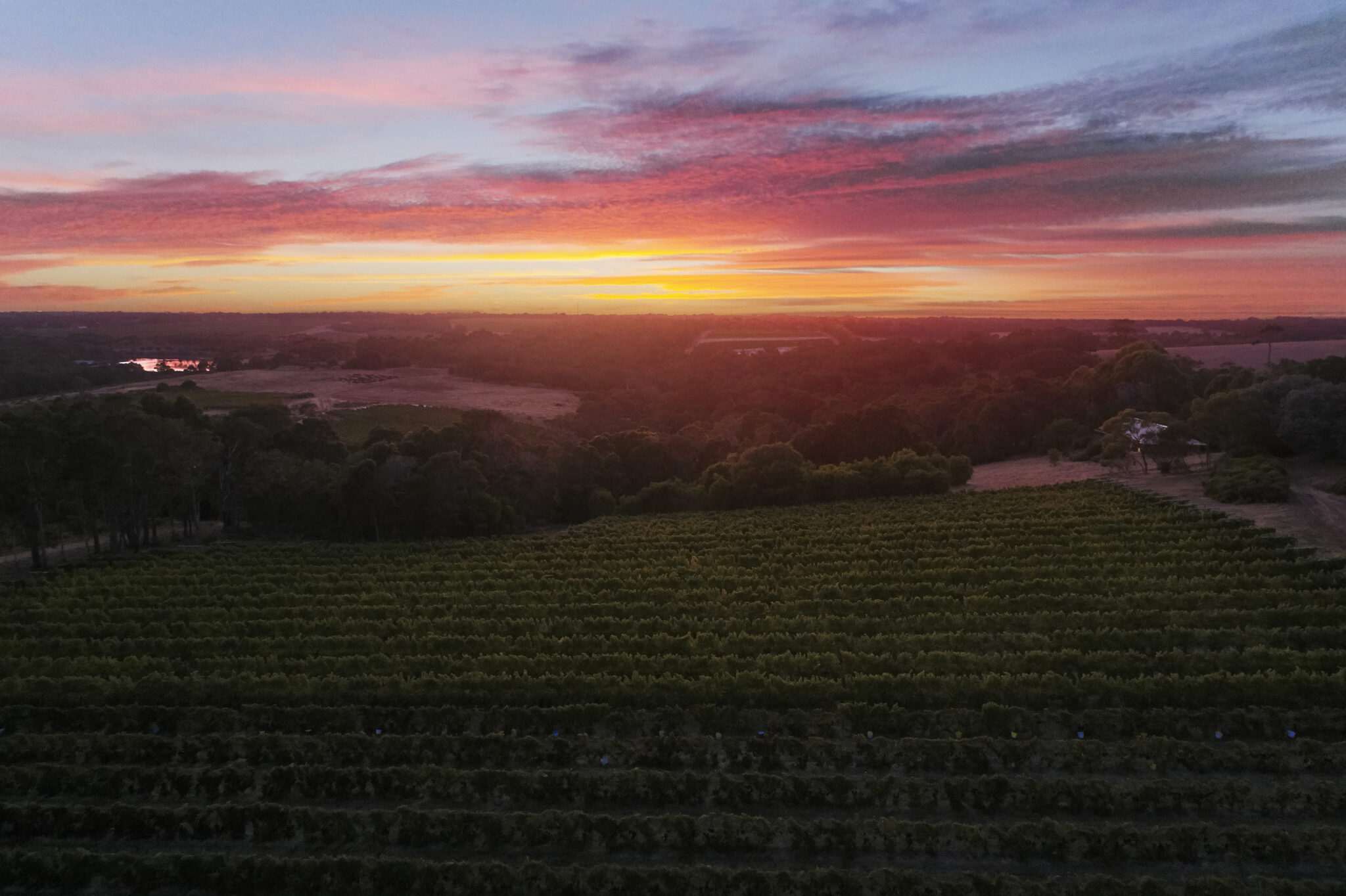Moss Wood 2020 Cabernet Sauvignon Newsletter
Autumn News Issue #117 March 2023
VINTAGE NOTES
A quick review of the weather we experienced during 2019-20 growing season suggests things were fairly comfortable. Calendar year 2019 was a little bit on the dry side and we recorded a total rainfall of 779mm, 24% below average but still plenty for growing unirrigated vines.
To explain our thinking on this point, Keith likes to make the comparison with McLaren Vale in South Australia, where he grew up. That region receives an annual rainfall of 658mm and back in the old days, when the vineyards there were unirrigated, the crop levels, on old-fashioned trellises were around 5 tonnes per hectare. In one of our driest years, we’ve had 18% more rain than that and so we could make the observation that if our vineyards aren’t yielding well enough, lack of water may not be one of the causes. It also goes some way to explaining why our long-term Cabernet Sauvignon yield is just over 7 tonnes per hectare.
The drier weather meant that flowering conditions were very good. During this crucial period in November, the Cabernet varieties experienced only 5 wet days and we received a meagre 8 mm of rain in total. With the dry conditions came moderate temperatures and we only had 4 days when the temperature dropped below the crucial 8°C.
Yet, despite these favourable conditions, Cabernet Sauvignon yields, at 4.5 tonnes per hectare, were down around 40%. This begs the questions, where did we go wrong?
To find the answer, we have to go back to 12.15am on Thursday 24th October, 2019. In the pre-Covid world, Clare and Keith had just returned from Singapore, having met their new baby grand daughter, Matilda. Arriving back home late in the evening on a rainy night and just settling into bed, there was a tremendous drumming on the roof that could only have been one thing – a hail storm. We have a rough rule of thumb about hail – if it lasts for 5 seconds, damage will be minimal but for every additional 5 seconds the damage goes up by 5%. As we lay there listening and counting, after 30 seconds it was becoming worrying and after 40 seconds, we pulled the covers over our heads and pretended we couldn’t hear it. A walk through the vineyard confirmed the 5 second hail rule had definitely applied and there was significant damage to bunches and shoots. All that remained was to see exactly what the losses were, although this never really becomes clear until the fruit is harvested.
To discuss this a bit further, there are a few key points about hail damage. The vines are usually only at risk when they have soft green tissue and bunches, that is, during spring and summer. During the autumn and winter, when they are protected by their bark, only a very extreme storm will cause any harm. When we get growing season hail, there are essentially two parts to the process. The first is the actual physical battering the plant receives when hit by the stones, causing bruising and wounding on the soft green tissue. The second stage is when fungi then establish themselves in the resulting wounds and which exacerbates the yield loss.
We can’t do much about the first stage, unless we were to cover the entire vineyard in hail netting, an expensive and unrealistic option, given the probability of damage is relatively low. However, we can apply fungicides to treat the infections resulting from the second stage and hopefully limit the resulting losses. This means we move quickly after a hail event and get treatments on as fast as we can and in 2019, we had these applications on within 48 hours.
Once all this settled down, we went back to a normal, comfortable season and then just before we started vintage a new challenge raised its ugly head - Covid-19. The world was starting to deal with its emergence and we watched on with worry as governments around the world began applying increasingly strict measures, leading eventually to lockdowns. These coincided with the later stages of our harvest and in particular, the picking of our Cabernet Sauvignon. There was a brief period where we were concerned our picking team and winery crew would be forbidden from attending work, although fortunately, that didn’t eventuate. As things turned out, agriculture was deemed essential work (something with which we’ve always strongly agreed) and so our people were able to travel freely. For a day or so, it looked like we’d all have to stay at Moss Wood and simply not leave the property but fortunately it didn’t come to that.
After all this it’s nice to return to the most important thing, wine quality.
In the background, the vines were doing their thing, ripening the grapes in excellent weather conditions. Temperatures were moderate, with virtually no extreme heat and our warmest day was 37 °C. The Cabernet varieties made their way steadily to full ripeness, very slightly ahead of average, no surprise given the significant crop loss. For the record, Cabernet Sauvignon took 116 days to go from flowering to harvest, compared with the average of 121. Cabernet Franc took 111 days, a week less than average.
We now arrive at another of the season’s oddities, Petit Verdot. This variety is VERY sensitive to flowering conditions and will abort its berries at the slightest hint of inclement weather. Yet, in 2020, the year of the hailstorm, it managed to produce a yield of 5.81 tonnes per hectare, 12% above average. The obvious conclusion is this block was less exposed to hail damage, which is how it appeared after the event. However, under normal circumstances we would still have expected nearly all the crop to have been aborted but being Petit Verdot, it chose to do the opposite. Probably because of the relatively bigger crop, it took 126 days to ripen, 4 days long than usual.
This also means the Moss Wood 2020 Cabernet Sauvignon brings to the discussion a slightly different blend, 90% Cabernet Sauvignon, 3% Cabernet Franc and 7% Petit Verdot. The impact of the latter is visible in the wine, with more perfumed dark berries on the nose and a concentrated tannin on the palate.
Yes, we’ve painted a picture of a complicated year but we’d like to finish on a positive note. None of the above had any negative impact on quality and the season 19/20 was near perfect for grape ripening. The average temperature was a Goldilocks-like 20.4°C, the were no disease problems and we kept the birds at bay. The vines easily ripened their crop and Cabernet Sauvignon picking got under way on 13th March and with a median harvest date of 22nd March, the vintage was 8 days earlier than average.
Production notes
All the fruit was hand-picked into bins and delivered to the winery where it was destemmed and placed in small open fermenters. Each batch was seeded with multiple yeast strains and fermentation proceeded with temperatures controlled to a maximum of 30°C. Colour and flavour extraction was by hand plunging 3 times per day and skin contact time was typically 16 days. After pressing, malolactic fermentation was carried out in stainless steel tanks and then each batch was racked to oak. All barrels were 228 litre French oak and 17% were new.
On 17th October 2022, all barrels were racked to stainless steel and blended in preparation for bottling. Fining trials were carried out but none improved the tannin balance of the wine and so it remained unfined. It was then bottled on 1st October 2022.
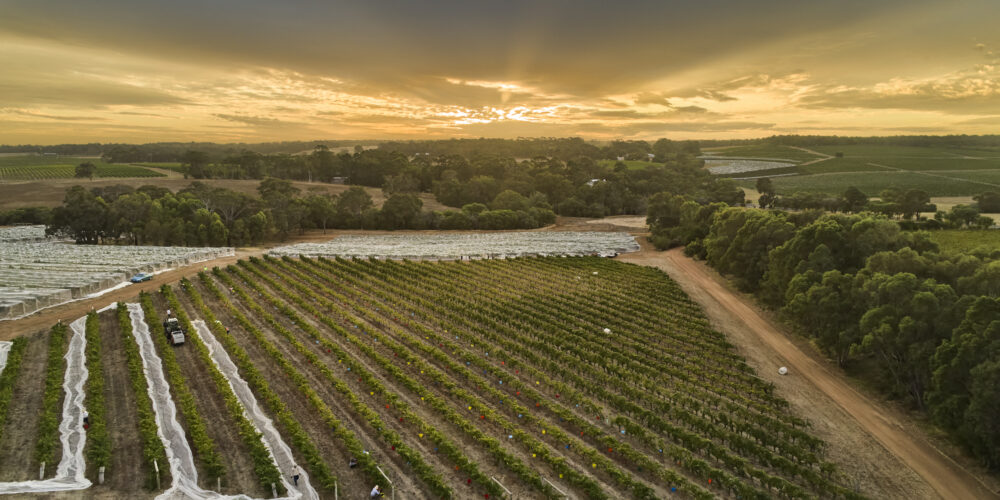
Moss Wood 2020 Cabernet Sauvignon
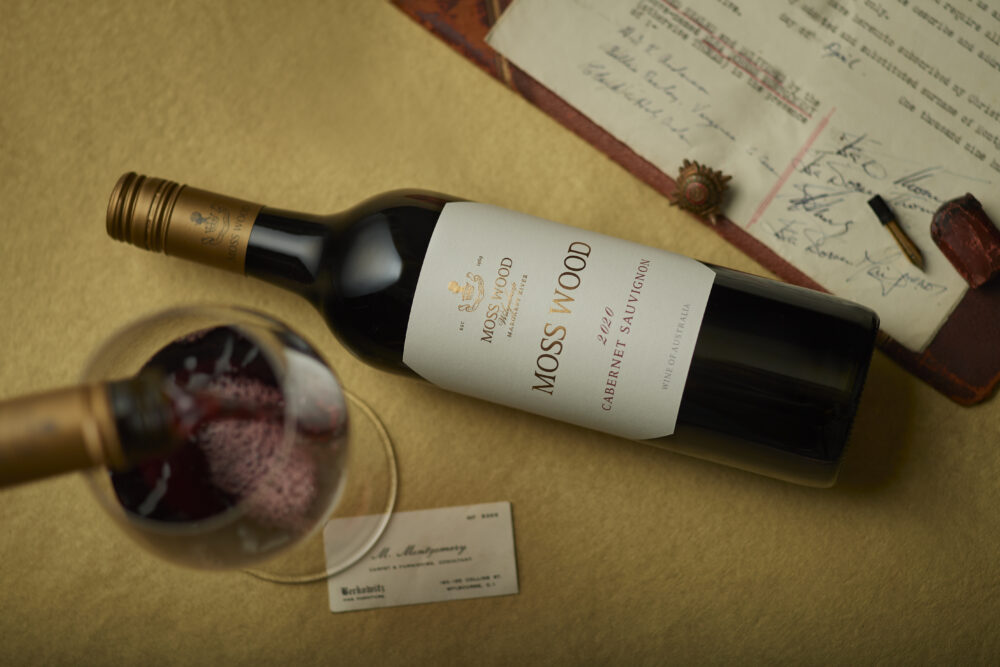
Tasting Notes
Colour and Condition:
Deep, brick red hue; bright condition.
Nose:
Dark and red berry aromas of blueberry, blackberry and redcurrant, plus some violets, cloves, dark jube and musk, a sure indicator of the presence of Petit Verdot. The complex background is all about Cabernet Sauvignon, with lots of tar, dark chocolate, tobacco and even some cinnamon and toasty oak.
Palate:
There is a concentration of all features which make this a classic, low-crop Moss Wood Cabernet Sauvignon, which in many ways, takes us all the way back to 1981. A full-bodied wine, there are generous blueberry and blackberry flavours, as well as dark, chocolate, coffee and licorice that fill the mid-palate. They sit over a structure of fresh acidity and concentrated tannin, making the wine bright, long and, for Moss Wood Cabernet Sauvignon, quite taut.
CELLARING
When we arrive at our cellaring advice, we always come up with the same question. What are the comparable vintages from the past? The prior years with similar yields were 1981, 2009, 2015 and 2016 and of those, the first two were hail-affected. The 2020 definitely brings back memories of the tannins of the ’81 but also some of the pretty aromas of the ’15. The key for us, though, is the 2020 is very much in the style of former and with that as our cellaring guide, this new vintage has a long life ahead and we anticipate relatively gradual development. As always, it has Moss Wood’s typical early balance, with a youthful fruit depth that is enjoyable now. However, do not be fooled. Beneath the velvet glove is a clenched fist that will keep this wine going for many decades and it may well repeat the performance of its older sibling and take 2 decades to show significant development.
| Wine Facts | |
|---|---|
| Median Harvest Date | Cabernet Sauvignon 22/03/2020 Cabernet Franc 5/03/2019 Petit Verdot 30/03/2019 |
| Mean Harvest Ripeness | Cabernet Sauvignon 13.0° Be Cabernet Franc 12.8° Be Petit Verdot 15.3° Be |
| Yield | Cabernet Sauvignon 4.5 t/ha Cabernet Franc 4.00 t/ha Petit Verdot 5.81 t/ha |
| Ripening Time from Flowering to Harvest | Cabernet Sauvignon 116 days Cabernet Franc 111 days Petit Verdot 126 days |
| Bottled | 1st October, 2022 |
| Blend | 90% Cabernet Sauvignon 3% Cabernet Franc 7% Petit Verdot |
| Alcohol | 14.0% |
2023 Growing Season
At the time of writing, we are pleased to say the very favourable conditions for the 2023 growing season are continuing. February was dry, with beautiful warm and sunny days and the start of March has been similar. The last pick of Pinot Noir was 3rd March and Moss Wood Chardonnay was off by 10th March.
Yields are down slightly and we’re still speculating about why that might be but quality is very pleasing, with good flavours on both varieties.
Slow and steady is the theme of the year and the Cabernet varieties look set to begin in the 1st week of April and at Ribbon Vale about a week later. If Mother Nature retains her good humour and delivers a warm, dry autumn we’re right on track to make a wine similar to those we made in the early and mid-nineteen nineties. The 3 vintages in question are 1991, 1994 and 1996 and current expected harvest dates for this year align quite closely with the former. We’ll take that.
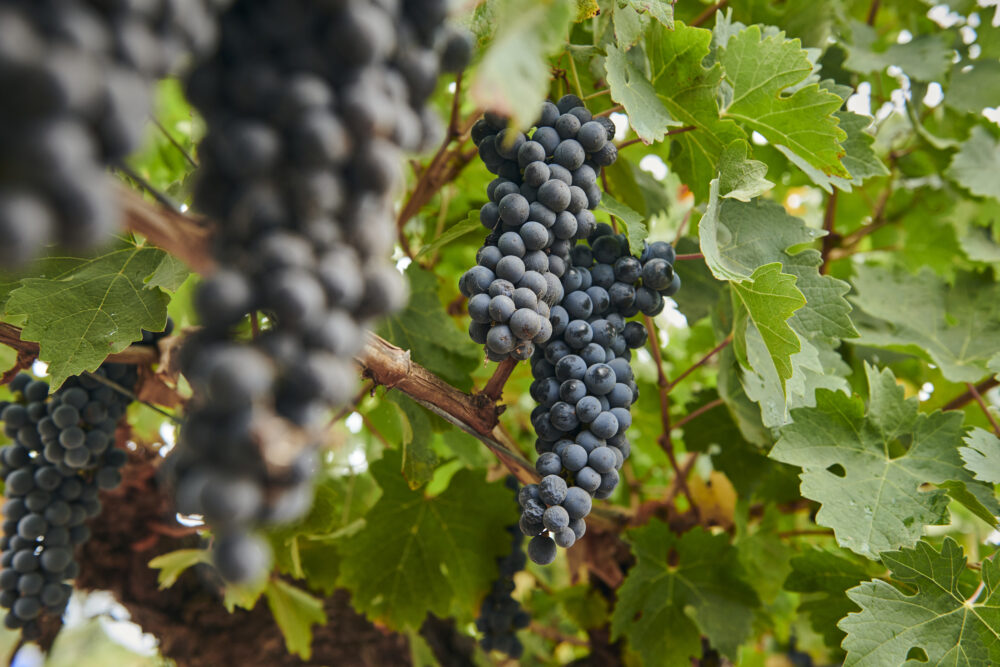
Vintage Crew
We’ve been lucky enough to get some really good people to join us for the 2023 vintage.
In 2020, Hamish McKirdy was working on his PhD at Murdoch University investigating brown marmorated stink bug and contacted us to discuss some aspects of his research. Hamish clarified for us the threat this pest represents to the Australian wine industry and for any readers who are curious as to exactly what that is, a Google search will quickly reveal the graphic nature of it. We do not want BMSB in this country. This led to further research cooperation between Moss Wood and the university’s Harry Butler Institute (older readers may remember Harry from his television days and his show Harry Butler in the Wild) and Hamish became a regular visitor. After completing his PhD, Hamish, who enjoys the hands-on work, has decided to try his hand at viticulture and winemaking and Dr McKirdy has now applied to and been accepted into Adelaide University to advance his wine studies.
In a first for Moss Wood, we have a Turkish winemaker, Tuğba Sahin, on the team this year. Tuğba is very well qualified, with a Bachelor of Science (Chemistry) from Canakkale University and a Bachelor of Science (Business Administration) from Anadolu University. She has had extensive experience working on the very famous Gallipoli peninsula (for Australians, at least) where she is currently Production Manager at Asmadan Winery in Eceabat, Canakkale. She is enjoying her time in Australia and it’s not too much of a busman’s holiday. Sadly, things have been very difficult for her with the bad news associated with the terrible earthquakes in eastern Turkey. Fortunately, her friends and family have been safe.
Tommaso Perini, who hails from Piacenza in Italy, is just about to finish his Bachelor’s Degree in Viticulture and Oenology at Piacenza University. Tommaso is a dedicated student of wine and at university has been involved in yeast research into the metabolisation of malic acid with Italian winemaking supply company, Francy-Oenologie. His work experience includes vintages with Roberto Cipresso in Montalcino and Bodega Matervini in Mendoza, Argentina and at the very famous Chateau Le Gay in Pomerol. It has been interesting for him to see two vintages in quick succession, dealing with the Bordeaux varieties but in different regions. He has also settled very comfortably into the Margaret River life.
It may not be appropriate to mention age these days but we’ll do so regardless because one of our crew, Andrew Wotherspoon, joined the wine industry at the tender age of 58, when two years ago he commenced the Bachelor of Agriculture and Technology (Viticulture and Winemaking) at La Trobe University. However, his early studies saw him complete a Bachelor of Arts at Sydney University and then a Master of Art (Art History) at the University of London. His CV is accordingly long and detailed but amongst his more interesting previous roles he managed the Friends of Sadler’s Wells Theatre in London. Now bitten by the wine bug, he likes the wine game and is enjoying the role of elder statesman in the Moss Wood cellar amongst the rest of the fresh faces.
It wouldn’t be a vintage at Moss Wood without a French connection and this year we have Honorine Gaston. Honorine, a native of Blois in Loire Valley, is very well qualified indeed. Her initial study was the technical degree at the Bordeaux-Blanquefort Wine School and she then went on to complete a Bachelor of Viticulture and Oenology and a Masters in Oenology at Paul Sabatier University in Toulouse. She also brings very good experience, having worked at two of our favourite Bordeaux chateaux, Smith Haut Laffite in Graves and Chateau La Lagune in the Medoc. Continuing the connection with the former, she also worked at the Cathiard Family Estate in the Napa Valley in California, where the General Manager is Justine Labbe, a Moss Wood alumnus from the 2019 vintage. Travelling with her husband Charles, they are enjoying their time exploring Australia with the thought of possibly even settling here in the future.
Anyone who has followed the Moss Wood newsletter for a long period may recall we had Nico Cueva helping us during the 2010 vintage. Nico worked for a number of years at the famous Sonoma winery, Kosta Browne and is now in charge at Haynes Vineyard for Lawrence Wine Estates in the Napa Valley. One of his young protégés, Jacob Frank, has made his way down from California. Being a Southern Cal boy, he’s settled into the Margaret River life like a local. Jacob has previously completed Associate Degrees in Journalism and Geography but then had a change of heart and thought the wine game looked interesting. Jacob moved from Santa Barbara and started in the Napa Valley at Haynes Vineyard and enjoyed it from the get go. Like many of us, he’s now into the wine travel thing and enjoying his time on the road.
Last, but not least, helping us again this year is Sammy McLenahan. She can’t stay away from the place. Regular readers may recall Sammy helped us for the first time in 2022 and has made herself irreplaceable since. Working in the wine game seems to appeal to her creative, film-maker personality and she’s now completed the full year cycle in the vineyard and winery, with big plans to work in the French vintage in September.
Welcome to Maya Willot
The most glamourous work at Moss Wood is in production, especially during our vintage and, as you can see from the list above, we’re lucky to have interesting folks come and help. However, just as important but less well-known, is that in the last decade, we’ve been offering paid internships for people to join us in the very important, behind-the-scenes work in our marketing and administration.
There has been much public debate in Australia, both during and since Covid 19, about the importance and value of the Working Holiday visa system in bringing international visitors in to work in our agricultural industries. The emphasis has been on harvesting and the assistance we need to get the crops in when they’re ready. Oddly enough, finding people to do vineyard work hasn’t been too difficult for us because we are lucky to have a strong relationship with the local Hazari people who have settled into our region as refugees from Afghanistan. Hard-working and friendly, they’ve made themselves indispensable in the Margaret River wine industry and any person seen wearing “hi-vis” in a local vineyard will almost certainly be a Hazara. However, human beings are such a scarce and valuable resource, the system is proving just as important in helping us bring people in to work in the business side of agriculture.
This brings us to our latest intern, Maya Willot. Maya is studying in the TEMA Masters program at Neoma Business School at Reims, in France and she joined us for a 6-month placement at the beginning of January. As a native of the Champagne region, her CV contains glamourous placements in various houses and we hope that things haven’t been too boring for her at dear old Moss Wood. She is helping us in a variety of roles including general administration, booking and hosting visitors, working on our web page and assisting with social media. She has taken to life in the region and has enjoyed a delightful Margaret River summer, while at home in Reims, the temperatures have been dropping below freezing. In particular, Maya has been thrilled with the opportunity to taste and learn about premium Australian wine, something that is not so easy to do in France.
© FRANCES ANDRIJICH
Order
OUR WINES:
Contact
MOSS WOOD:
Location: 926 Metricup Road, Wilyabrup WA
Postal: PO Box 225, Cowaramup WA 6284
Phone: +61 8 9755 6266
Fax: +61 8 9755 6303
Follow us on
SOCIAL MEDIA:

